




















By Cait Crudden
On Sunday, thousands of runners and walkers, including The Messenger, gathered for the annual Tunnel to Towers 5K in New York City. The event honors the memory of first responders, military personnel, and civilians who lost their lives on September 11, 2001, as well as those who have died since due to 9/11-related illnesses and military service. Participants began their journey in the Red Hook area of Brooklyn, making their way through the Brooklyn Battery Tunnel and emerging in front of One World Trade Center in Manhattan, where they were greeted by a poignant tribute to the fallen.
The Tunnel to Towers Foundation was created in memory of Stephen Siller, a firefighter with the FDNY and Brooklyn’s Squad 1. On the morning of September 11, 2001, Siller had just finished his shift and was on his way to play golf with his brothers when he heard about the first plane hitting the North Tower of the World Trade Center. Without hesitation, he turned his truck around and rushed to join his fellow firefighters. When he found the Brooklyn Battery Tunnel closed to traffic, Siller strapped on 60 pounds of gear and ran through the tunnel to Ground Zero. Tragically, he lost his life that day, alongside 342 other firefighters.
Continued on page 16















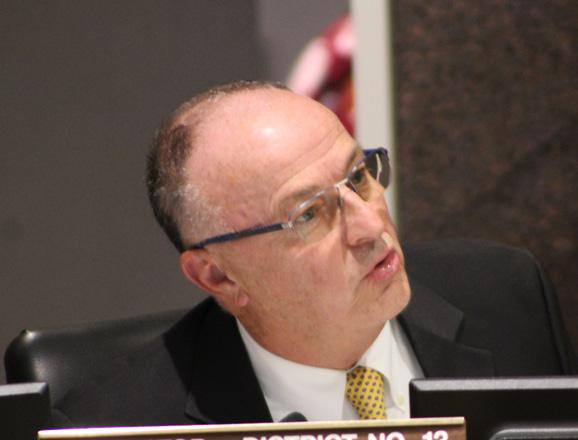















By Matt Meduri
The discussions of mental health, substance abuse, the opioid epidemic, and staggering divisiveness of the world always culminate in one topic: Veterans, or more accurately, resources for Veterans.
Unfortunately in the center of the Venn Diagram with the aforementioned problems included, Veterans and their health and resources are of frequent interest and action from civic groups, community leaders, and elected officials.
In the spring, freshman Suffolk County Legislator Chad Lennon (C-Rocky Point) sponsored a bill to designate September 22 as Veterans’ Suicide and Awareness Remembrance Day, with September already nationally recognized as Suicide Prevention Month and with the date of September 22 mirroring the estimated twenty-two Veterans who take their own lives each day.
Continued on page 10

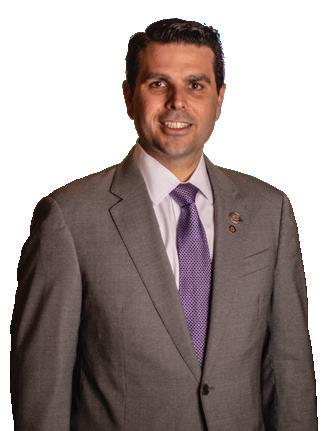
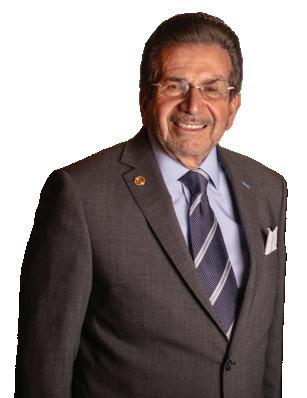











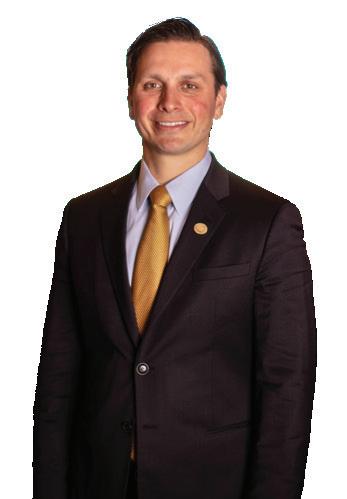










of
NY,
of
of
1879.
Thursday, October 3, 2024
By Matt Meduri
Tuesday night played host to the only scheduled Vice Presidential debate of the 2024 cycle. Senator J.D. Vance (R-OH) and Governor Tim Walz (D-MN) met for their only head-tohead matchup in Midtown Manhattan, hosted by CBS Evening News.
Vance, 40, serves as Ohio’s junior U.S. Senator, having only been elected to his first political office in 2022. Vance’s presence on the ticket is notable, not just due to his age, but also his appearance on the ticket after Trump elected not to court former Vice President Mike Pence’s (R-IN) presence on the campaign this year.
Vance is also a venture capitalist, author, and Marine Veteran. His 2016 memoir Hillbilly Elegy became a New York Times bestseller and was adapted into a film in 2020.
Walz, 60, on the other hand, has served as Governor of Minnesota since 2019. He was reelected in 2022, but by a thinner margin than his first election. Before that, he represented the swingy MN-01 across the southern border of the state in the U.S. House. He has also served in the U.S. Army, Nebraska National Guard, and Minnesota National Guard, although the authenticity of his service claims has come into question.

Walz is also a former teacher, having graduated from Chadron State College in Nebraska in 1989. He took a one-year teaching position with WorldTeach in Guangdong, China. He had claimed that he arrived in Hong Kong just as the Beijing government staged its retaliation against protests at Tiananmen Square. However, the New York Times reported just this week that he did not travel to China until after the protests.
Walz returned to Nebraska to teach and coach. He met his wife there and moved to her home state of Minnesota, where he continued teaching until his run for Congress in 2006.
“CBS Evening News” anchor and managing editor Norah O’Donnell and “Face the Nation” moderator and Chief Foreign Affairs Correspondent Margaret Brennan served as moderators. Traditional debate decorum applied: each candidate received two minutes per question, with two minutes allotted for rebuttals. Candidates were also allowed another minute for further points, with another minute available at the moderators’ discretion. Moderators also reserved the right to mute microphones to maintain decorum. No live audience was present.
Editor’s Note: For spacing concerns, not all topics discussed at the debate are summarized in this article.
The Middle East
Governor Walz received the first question regarding his support or opposition of a preemptive strike by Israel on Iran given the latter country’s vocal sponsorship of terrorism and likelihood of producing a nuclear weapon in a critically short period of time.
Walz opened by invoking the October 7 terrorist attacks levied by Hamas on Israel that recently saw several hostages executed by the terrorist group and still leaves thousands either imprisoned or dead.
“Israel’s ability to be able to defend itself is absolutely fundamental,” said Governor Walz, adding that retrieving hostages and ending the “humanitarian crisis in Gaza” are also “fundamental.” He also said that the “expansion of Israel and its proxies is an absolute, fundamental necessity for the United States to have the steady leadership there.”
Walz quickly criticized President Trump, saying that “a nearly-eighty-year-old Donald Trump talking about crowd sizes is not what we need in this moment.” He also remarked on Vance’s prior opinion on Trump, in which the Ohio Senator said Trump was “unfit for office,” mirroring this with Harris’ leadership that he called “steady.”
Vance then had the microphone, but he took a point of personal privilege to introduce himself to the public, conceding that his and his opponent’s name recognition are relatively low compared to the presidential nominees.
“I was raised in a working class family,” Vance opened, a likely reference to Vice President Harris’ oft-repeated quote of her background. My mother required food assistance for periods of her life. My grandmother required Social Security help to raise me. And she raised me in part because my own mother struggled with addiction for a big chunk of my early life. I went to college on the G.I. bill after I enlisted in the Marine Corps and served in Iraq.”
Regarding Israel and Iran, Vance claimed that Trump “delivered stability” to the world through “effective deterrence.”
“People were afraid of stepping out of line,” said Vance of the policy as it relates to foreign adversaries. “Iran has received over $100 billion in unfrozen assets thanks to the Kamala Harris Administration. They use it [that money] to buy weapons that they’re now launching against our allies and, God forbid, potentially launching against the United States as well.”
Vance heralded Trump’s classical “peace through strength” policies he exerted in the White House and, regarding support of a preemptive strike, Vance said that “it is up to Israel what they think they need to keep their country safe.” He reiterated American support for allies, adding that it is the “right approach” with Israel.
Walz rebutted that Trump’s policies pushed Iran further to nuclear capabilities, undoing the work of other countries who had “boxed” Iran’s nuclear program. Walz pointed to the recent Iranian attacks on Israel, stating that they were “repelled.”
Vance countered Walz’s claim of Iran being “as close to a nuclear weapon today as they have ever been,” pointing blame on Harris, who has been in office since January 2021. He added that, at forty years of age, he cannot recall a president other than Trump under whom no major conflict unfolded during his tenure.
The conversation then turned to Hurricane Helene and climate change, the latter for which moderator Norah O’Donnell said that 70% of Americans and 60% of Republicans under the age of forty-five support national steps to reduce the impact of climate change.
Vance said that people are “justifiably worried about all these crazy weather patterns.” He reiterated his and Trump’s support of clean air and water, but doubted that carbon emissions are driving “all the climate change.” He gave the benefit of the doubt, however, to that argument’s authenticity, saying that it reinforces the need for energy and manufacturing independence.
“What have Kamala Harris’ policies actually led to? More energy production in China, more manufacturing overseas, more doing business in some of the dirtiest parts of the entire world,” said Vance, adding that “Kamala Harris doesn’t believe her own rhetoric” on climate change.
Walz said that Trump has called climate change a “hoax” and defended the Inflation Reduction Act’s ability to create 200,000 jobs in the nascent electronic vehicle sector across the country. He also touted Minnesota as the site of the largest solar manufacturing plant in the country.
“My farmers know that climate change is real. They’ve seen 500-year droughts…floods, back to back,” said Walz, adding that Minnesota is producing more natural gas and oil “at any time than we ever have.”
Vance countered that if American money is spent on solar panels made in China, then “you’re going to make the economy dirtier.” He called for a cleaner environment with more energy production and a nuclear facility.
Walz rebutted that “the folks” [of Minnesota] “are not liberal folks…not folks that are ‘green.’” He also said that Minnesota’s top export “cannot be topsoil from erosion from these massive storms,” and that “mitigation” efforts are necessary, such as burying power lines.
Norah O’Donnell gave an on-air fact-check, stating that the “overwhelming consensus among scientists is that the earth’s climate is warming at an unprecedented rate.”
Immigration and the Southern Border
Immigration was the next topic, with Vance calling the current border situation a “historic immigration crisis” due to Harris’ desire to “undo” Trump’s border policies. He cited ninetyfour President Biden (D-DE) executive orders suspending deportations, decriminalizing illegal immigrants, and increasing cases of asylum fraud. Vance also used a phrase heard often here in Suffolk County: “stop the bleeding,” namely when referring to record-level fentanyl overdoses across the country.
“Build the wall, re-implement deportations,” said Vance. Regarding 20 to 25 million illegal migrants in the country, Vance said his team would make finding and deporting criminal migrants their priority, among whom he says “about a million” have committed a crime in addition to crossing the border illegally. He elaborated that it should be made more difficult for illegal aliens to “undercut the wages of American workers.” Vance also invoked the 320,000 children, some of whom have been sex trafficked, he said, whose whereabouts are unknown under the current Department of Homeland Security.
“The real ‘family separation’ policy in this country is, unfortunately, Kamala Harris’ wide-open southern border,” said Vance, adding that the cartel utilizes children and/or vulnerable migrants as “drug mules.”
Walz immediately rejected “drug mule” claims, but failed to elaborate and instead pivoted towards fentanyl, adding that opioid deaths have decreased by the largest rate in just the past twelve months. He defended Harris’ prosecutorial record, stating she prosecuted “transnational gangs for human trafficking and drug interventions.” He also referenced a recent bipartisan immigration bill that congressional Republicans opposed, a move he said was due to Trump’s influence on their votes and his desire to have a “campaign issue.” He also said that only 2% of Trump’s proposed wall was built and that Mexico “didn’t pay a dime.”
Vance said that Harris bragged “for three years” about undoing Trump’s border policies, adding that she was successful in such efforts, resulting in “record” amounts of “fentanyl” coming into the country and a “record” number of illegal border crossings.
“And now that she’s running for President…she says that somehow she got religion and cared a lot about a piece of legislation,” said Vance of the congressional legislation.
Moderator Margaret Brennan pressed Governor Walz on deportations, sharing a CBS News poll that shows more than 50% of Americans support mass deportations
Walz said the poll is a result of not wanting to “solve” the issue, but rather “demonize it.” Vance countered by saying that law enforcement needs to be empowered to do their jobs and that the remain-in-Mexico policy should be reinstituted. He also mentioned overwhelmed schools and hospitals across the country, notably in Springfield, Ohio, which is the site of apparent domestic pet-nappings at the hands of Haitian immigrants.
Walz said that border patrol and law enforcement supported the aforementioned immigration bill, adding that the bill would have provided funds for case adjudications.
“It should not take seven years for an asylum claim to be done. This bill gets it done in ninety days,” said Walz. He then quoted a Bible verse, Matthew 25:40: “To the least amongst us, you do unto me.
“I think that’s true of most Americans,” said Walz, suggesting a more altruistic approach to the issue.
Vance sparred with Brennan over a mid-debate fact-check over the legal statuses of Haitian migrants in Springfield. Vance said that the CBP One app can be used to apply for asylum or parole
Published by Messenger Papers, Inc.
Continued from previous page
and be granted legal status “at the wave of Kamala Harris open-border wand.”
“That is not a person coming in, applying for a green card, and waiting for ten years. That is the facilitation of illegal immigration,” said Vance.
Brennan remarked: “Thank you, Senator, for describing the legal process.”
Walz attempted to interrupt by stating that the immigration laws described by Vance have been “on the books” since 1990, with Vance interjecting to refute the claim. The moderators cut the mics and pivoted to economy.
O’Donnell asked Walz to defend Harris’ economic plan, which includes billions in manufacturing and housing tax credits, as well as a renewed child tax credit. O’Donnell added that the plan was reviewed by the Wharton School of Economics, President Trump’s alma mater, and the school found the proposals would increase the national deficit by $1.2 trillion.
Walz defended Harris’ plan, stating that three million new houses under the plan would be coupled with down payment assistance “on the front end.”
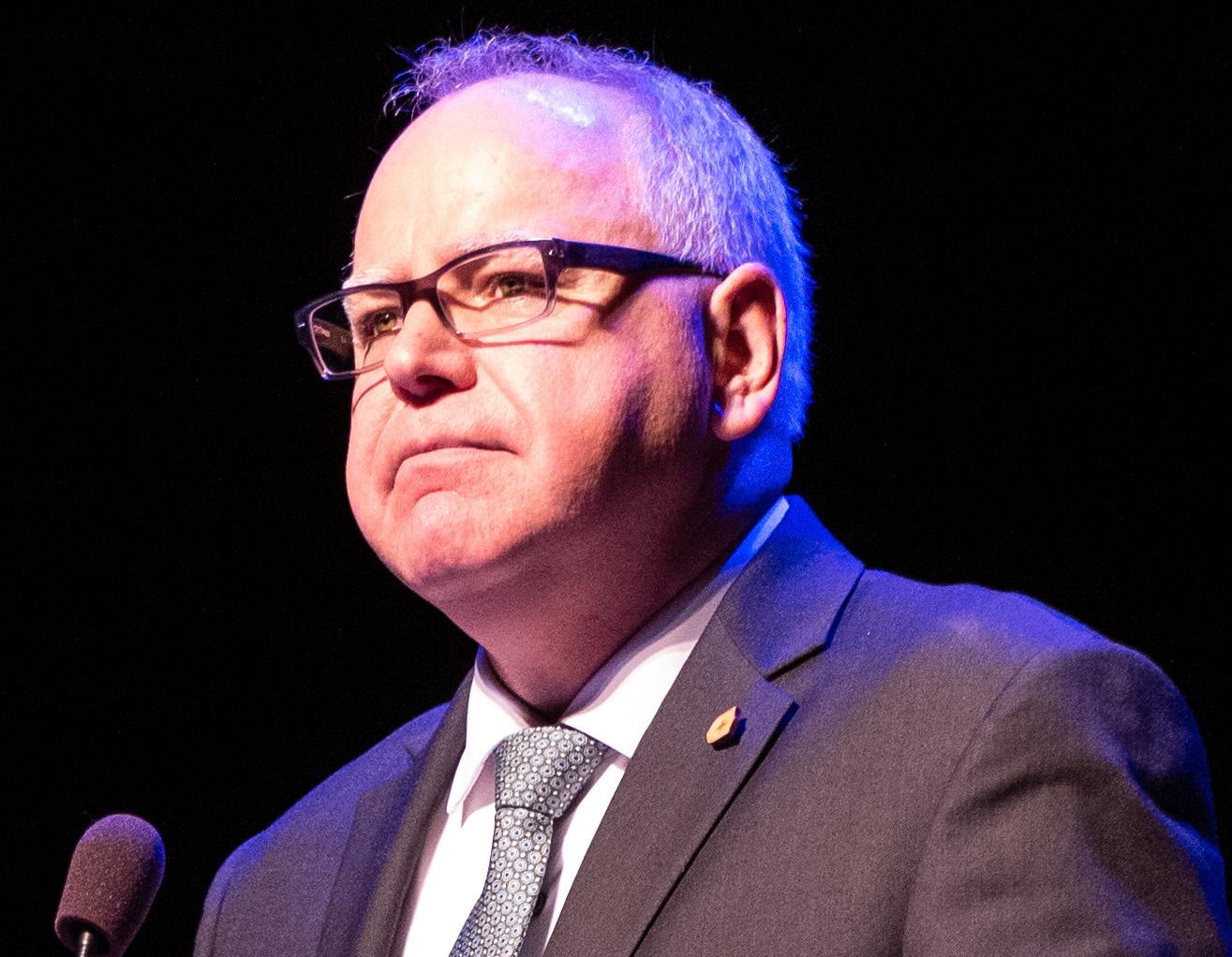
He then touted the Biden Administration’s price cap of $35 per dosage of insulin, stating that it was $800 before the law went into effect, but lamenting that insulin costs only $5 to make. Walz brought statistics from his state as well: a 12% increase in the housing stock in Minneapolis saw rent prices decrease by 4%; a $6,000 child tax credit that reduced the state’s childhood poverty by one-third. He said that the existing federal small business tax credit is $5,000, which he hopes to see Harris increase to $50,000. Walz lambasted Trump’s “tax cuts that predominantly went to the top caste,” which he says contributed to $8 trillion added to the deficit. He says Trump’s proposed 20% consumption or sales tax would be “destabilizing.”
“We’ll just ask the wealthiest to pay their fair share,” said Walz.
O’Donnell posed the same question to Senator Vance, with the Wharton School’s estimate of Trump’s plan imposing a $5.8 trillion increase to the national debt.
Vance opened by stating that Harris could have had a hand in implementing the plans she is now outlining, but never did. Instead, Vance says her policies have increased the cost of food by 25%, housing by about 60%, and made middle-class life “unaffordable” for most Americans.
“If Kamala Harris has such great plans for how to address middle class problems, then she ought to do them now, not when asking for a promotion, but in the job the American people gave her three and a half years ago,” said Vance, adding that the economists who attack Trump’s plans “have PhDs, but they don’t have common sense” or “wisdom.” Vance defended Trump’s economic policies, stating that they delivered the “highest take-home pay in a generation,” brought inflation down to 1.5%, along with international peace and security.
Walz said that Harris’ “day one” in Washington was Trump’s failure of the COVID-19 Pandemic, which led to the “collapse of our economy.” He pointed out the country was facing a manufacturing recession on the first day of the Biden-Harris Administration. Walz criticized Vance’s dismissal of the sideline economic counsel from Wharton.
“‘Economists can’t be trusted. Science can’t be trusted. National security folks can’t be trusted,’” Walz said, in a mockery of Vance’s positions. “Look, if you’re going to be president, you don’t have all the answers. Donald Trump believes he does. My pro tip of the day is this, if you need heart surgery, listen to the people at the Mayo Clinic in Rochester, Minnesota, not Donald Trump.”
Walz also hit Trump on his tax records.
Vance delivered a rebuttal to Walz’s suggestion of “trusting the experts,” in that the “experts” said the U.S. would benefit from cheaper goods and a stronger middle-class from outsourcing manufacturing to China and Mexico.
“They were wrong about the idea that if we made America less self-reliant, less productive in our own nation, that it would somehow make us better off,” said Vance. “And for the first time in a generation, Donald Trump had the wisdom and the courage to say…we’re not doing it anymore.”
Walz agreed with most of Vance’s points, but criticized Trump’s trade policies, saying that his tariffs “created the largest trade deficit in American history with China.” He touted himself as a “union guy,” adding that his state has seen some of the issues often seen when states try to selfregulate their economies of scale, such as collective bargaining rights being “undercut” and “rightto-work” states making it “more difficult” to deal with the trade war.
Vance claimed a flaw in Walz’s logic, in that Walz says Trump “has to listen to the experts,” but that when Walz acknowledges that the experts “screwed up,” Walz backtracks by saying that Trump “didn’t do nearly as good of a job as the statistics show he did.” Walz called this a “gross generalization.”
She said that the vice president is often the “last voice the president hears before making consequential decisions.” With that, she asked Walz to clarify the timeline discrepancy on his 1989 Hong Kong visit.
Walz opened by painting a scene of bucolic Nebraska where he grew up and how he used the G.I. Bill, like Vance, to further his profession after military service. He discussed his first trip to China in 1989, followed by many other excursions with other sports teams he coached. He contends that he has “not been perfect” and a “knucklehead at times.” But he countered this by saying that the community who has recognized his faults kept him in Congress for twelve years, followed by two elections as governor. He then discussed his bipartisan record in Congress. Walz was pressed by Brennan for an answer on the discrepancy, to which Walz shortly replied: “No,” and that he “misspoke” on the timeline, but still asserted he was in Hong Kong and China during
the season of protests.
Brennan then asked a tough question of Vance, namely of his view of Trump to be “unfit” for office in 2016 and that he disparaged Trump’s economic record during Trump’s first term.
Vance said that he’s always been “open” and has “disagreed” with Trump in the past. However, he said he has been “extremely open” about how he was “wrong about Donald Trump.” Vance said he was “wrong” because he believed some of the media’s stories on Trump’s record and that Trump delivered on many promises - rising wages, a working economy, and a secure southern border, in his words - during his time in office that Vance did not assume were possible of Trump. He also contends that some aspects of the Trump Administration “could have been done better in the first round,” but contended that a more bipartisan congress would have been more productive under Trump.
Vance also mentioned that, despite Walz’s criticisms of the trade war and its apparently disastrous effects on his home state, Biden and Harris have not suspended the Trump-era tariffs, calling it one of the most “proworker” parts of the Biden Administration.
Walz dismissed Trump’s claims that ninth-month abortions are legal in Minnesota, but quickly pivoted to how Trump “brags” about appointing Supreme Court Justices responsible for the June 2022 overturning of Roe V. Wade. Walz discussed a Texas woman who was eighteen weeks pregnant and required an abortion due to a complication that, otherwise, would have led to sepsis and a possibility of infertility. He also mentioned a twelve-year-old in Kentucky who was raped and impregnated by her stepfather.
Walz said that Minnesota “restored Roe V. Wade,” and that “if you don’t know” the aforementioned women, “you soon will.” Walz said that “their” [Trump’s and Vance’s] Project 2025 is going to have a “registry of pregnancies” that he claims will make it “impossible to get contraception” and “eliminate access to infertility treatments.” Walz also does not approve of the “states’ rights” prerogative set by the reversal of Roe V. Wade, in that “this is a basic human right.”
“In Minnesota, we are ranked first in health care for a reason. We trust women. We trust doctors,” said Walz.
Vance said that his team “certainly” would not pursue a federal pregnancy monitoring agency and invoked an anecdote of his own, a woman who felt that if she hadn’t terminated her pregnancy, her life would have been “destroyed” because she was in an abusive relationship. Vance said he and Trump are “endeavoring” to make the Republican Party one of family values “in the fullest sense of the word,” pertaining to fertility treatments and affordability for families to grow.
“I think there’s so much that we can do on the public policy front just to give women more options,” said Vance, endorsing the states’ rights to determine their own policies. “I think it’s what makes the most sense in a very big, a very diverse, and let’s be honest, sometimes a very, very messy and divided country.”
Walz again mentioned Trump’s “false claim” of late-term abortions being legalized in Minnesota, but pivoted again to another anecdote, this time of Amber Thurmond. Amber attempted to receive an abortion in Georgia but had to travel a “very long distance” to North Carolina, where she died on that journey.
“There’s a very real chance that had Amber Thurman lived in Minnesota, she would be alive today,” said Walz, contending that he agrees “a lot” with Vance’s points on the issue, but that Trump does not agree with either of them.
Vance was asked about his previous support for a national abortion ban, which he denied and said that he was referring to some minimum national standard during his 2022 Senate campaign, mainly as it pertains to late-term abortions. Vance said that Democrats have taken a “very radical pro-abortion stance.”
Walz countered by saying that Democrats are not “pro-abortion,” but “pro-women” and “profreedom to make your own choice.”
The segment ended with Vance pressing Walz for an answer on the Minnesota law he signed that does not require doctors provide life-saving care to a baby who survives a botched late-term abortion, a practice Vance has called “barbaric.” Walz denied this, saying “that is not the way the law is written,” but failed to cite the language of the law to back this up and responded with “just mind your business on this.”
Walz added that other services for children are prioritized in Minnesota, such as meals, early childhood education, and healthcare, to which Vance responded that he had still not received an answer to the question on the state’s abortion law.
In closing, Walz made his pitch to voters by advertising the “coalition Kamala Harris has built,” ranging from Senator Bernie Sanders (I-VT) to former Vice President Dick Cheney (R-WY). He countered the campaign of “fear” waged by Trump and Vance.
“Kamala Harris is bringing us a new way forward. She’s bringing us a politics of joy. She’s bringing real solutions for the middle class,” closed Walz.
Vance remarked on his adolescence in poverty, saying that whether families are “rich or poor” shouldn’t preclude them from heat in the winter, affording groceries, buying a house, and living in safe, drug-free neighborhoods - all aspects of American life he says has “gotten harder” under Harris.
“She’s been the Vice President for three and a half years. Day one was 1400 days ago. And her policies have made these problems worse.
“We need change. We need a new direction. We need a President who has already done this once before and did it well,” closed Vance.
If you tuned into Tuesday night’s vice presidential debate - and the only one of the 2024 cycle - you probably weren’t too surprised, just as you likely weren’t after the presidential debate about a month ago.
However, unlike the near-universal facepalming Donald Trump (R-FL) and Kamala Harris (D-CA) received from their debate performances - The Messenger editorialized it as: “Trump Takes Bait, Harris Reads from Script” - this debate wasn’t nearly as spicy. In fact, if it was a spice, it would probably be closer to flour or cornmeal.

This is not something we lament; in fact, this is more of a standard debate. Senator J.D. Vance (R-OH) took multiple opportunities to make this election a referendum on Joe Biden (D-DE), while Governor Tim Walz (D-MN) defended Harris’ record and involvement in the Biden Administration.
This is about as run-of-the-mill as it gets, and it shows. The Messenger made no official winner declaration in the presidential debate, not that we are obliged to, but both candidates failed to state their positions effectively, all while Trump battled the moderators while Harris wasn’t speaking.
This debate was different, however. The Messenger gives Tuesday night to Senator Vance. We’ll begin with the obvious: not many people were likely awaiting this night to be a significant help in their decision for president. Not only are the vice presidential debates viewed as more of an exhibition match compared to presidential debates, but we’re comfortable with the assumption that people who watched are politically involved and sat down to root for their team. There’s nothing wrong with this, it’s just the dose of reality we have to request for context.
Undecided voters might have had some help, but we’re also comfortable in assuming that that bloc of voters probably won’t make up the difference of voters in select states required for either candidate to win. In the political era of yesteryear, it’s probable that Tuesday night could have had more of an impact. But in the hyperpartisan environment of today, we see this as a remote possibility.
The big aspect of this debate, however, was not as much in the conduct or cordiality displayed on stage, but rather how many in the political world, especially the Democrats, were likely disarmed by Vance’s performance.
From what we have seen and heard around town and in discussion posts online, it seemed that many were expecting Vance to come off as more dismissive and play hard offense, as he has appeared in some situations with the press, allowing for Walz to simply allow Vance to be his own worst enemy.
But that’s not at all what happened. Vance was confident, concise, highly articulate, and avoided various pitfalls that inevitably become the most replayed scene-stealers of the night.
Moreover, Vance did something remarkable that likely frustrates many Republicans: Vance was more successful in tying Biden’s record to Harris than Trump was in tying the record to his own opponent.
In the presidential debate, Trump started out decently, but it quickly fell apart as he took bait after bait, with Harris offering little substance and quickly escaping to scripted platitudes when the going got tough. It was canned, but she played it off reasonably well. Trump, on the other hand, was difficult to understand.
The same cannot be said for Vance. Not only was he easily understandable, but he cut right through to policy many Republicans likely wish Trump had.
One notable example was the abortion question, a massive liability for Republicans since the Supreme Court’s 2022 overturning of Roe Vs. Wade. Vance has been smeared as an antiabortion advocate, whose religious views are incompatible with modern America. Instead, Vance took that liability and turned the argument around in such a way that Walz was clearly not expecting. Vance openly recognized the GOP’s struggle with the abortion issue, opining that the party needs to earn voters’ trust back on the issue. Vance vehemently denied any plans of a national ban and vocally supported fertility treatment and presenting other options to women who feel abortion is their only alternative.
Walz handled his portion of the question decently, but unmistakably floundered when Vance pressed him on the legal language of the Minnesota bill that Walz signed that does not require doctors to perform live-saving care to late-term infants who survive botched abortions.
Stunningly, Walz could not provide an answer, simply stating “that’s not what the law says,” and that his philosophy on the matter is simply: “Just mind your own business.”
Vance’s performance also highlighted his softer image, which he emphasized by talking about his three young daughters frequently and even reacting with a “Christ, have mercy,” reply to Walz’s story about his son having witnessed a shooting. The softer image from Vance is almost a necessity to balance the ticket with a personality like that of Donald Trump.
Walz’s performance was not terrible, but he was clearly having trouble throughout the night. At times, he looked visibly uncomfortable, especially when pressed with a difficult question. Walz had several.
Failing to settle the score on Minnesota’s abortion laws that he signed as governor notwithstanding, Walz also failed to take an easy mea culpa on his 1989 trip to Hong Kong. Walz claimed that he arrived there during China’s notorious retaliation against the Tiananmen Square protestors. We’ll give the moderators kudos on not only specifically asking Walz to clarify his timeline, but also following up to request that he answer that question specifically.
In the end, Walz says he merely “misspoke” about his timeline. It’s certainly not the end of our world here at The Messenger, but his clear floundering in trying to simply state his
Image by Freepik
mistake, or even simply admitting to have lied about it years ago, was more cringe-inducing than the actual fib itself, whatever his motive, or lack thereof, for telling it.
Walz also simply passed on debating Vance on tariffs, perhaps the strongest part of Trump’s night just a month ago. Walz railed against Trump’s trade war with China, saying it impacted how the Midwest was able to regulate their economies. The problem is, Biden and Harris haven’t repealed the tariffs. The Trump-era trade war is, in some ways, still being waged, and Harris-Walz are simply running against an effigy that they don’t clearly intend to burn any time soon. We’d love to give them credit for that, if only they’d concede it’s an idea that’s clearly working.
We’ll also take a moment to “out-Midwest” arguably the most “Midwestern” politician in this race, besides, arguably, Senator Vance.
Iowa was a state Republicans had just gotten used to losing until Trump hit the campaign trail in 2016. The farm crisis of the late 1980s gave the state to Michael Dukakis (D-MA) over George H. W. Bush (R-TX), one of just ten states to back Dukakis in his landslide loss to Ronald Reagan’s (R-CA) right-hand man. Bill Clinton (D-AR) secured Iowa twice, followed by a narrow Al Gore (D-TN) in 2000. George W. Bush (R-TX) was able to flip it back, but Barack Obama’s (D-IL) Midwestern roots and populist overtones pushed the state desperate for “change” to his column twice, and by rather decent margins.
Not only did Trump flip a state won only once by a Republican in the last near-forty years, but he did so by a near-ten-point margin. In the 2020 race, pundits and pollsters alike seemed bullish on Biden’s chances in the Hawkeye State, asserting that the trade war hurt Iowa’s soybean farmers so much that they were almost certain to pass on a second dose of Trump.
Trump essentially repeated that ten-point margin in 2020, despite polls showing Iowa no better than a coin toss.
We relay this anecdote to say that Midwesterners probably understand what they’re voting for, and as much as Walz wants to gin up his “Midwestern” flair, his neighbors likely support the Trump-era policy, even if it did hurt some farmers in the short run. Trade wars are effective in bringing about long-term economic change.
Walz was also visibly disarmed at Vance’s quick jabs regarding Walz’s logic. Walz asserts that the “experts” and their advice should be heeded. Vance countered that the “experts” have advised on outsourcing manufacturing and jobs would save the U.S. money in the long run and create a vibrant middle-class economy. Walz conceded that he agreed with most of Vance’s points, but still fell short of saying the quiet part out loud. Vance, however, pinned him on this, unfolding Walz’s logic before his very eyes, in that Walz believes the Trump economy was not as good as statistics show.
What was most jarring of the night, however, was Walz’s erratic movements on stage and his wide-eyed expressions into the camera. He didn’t look natural or that he belonged; he looked nervous and put on the spot. He didn’t do himself any favors by trying to stammer out his viewpoints and shuffle his notes trying to recall his rehearsal notes.
To Walz’s credit, he was still more understandable than Trump was for most of the presidential debate performance last month. Even if we don’t find Walz’s policies and logic agreeable, we at least understood where he was coming from, most of the time.
It takes a big person to admit when he or she is wrong, especially when the world is watching. This is perhaps the biggest moment of the night, in our opinion.
When nailed on his Tiananmen Square timeline, Walz stammered and simply said he “misspoke.” His folksy, affable demeanor, while charming at times, didn’t land well, in our opinion, when he called himself a “knucklehead” and that “he’s not perfect.”
We agree. After all, who is?
Now, let’s hear how Vance handled his past incorrectness.
When asked about his prior reservations about a Trump presidency in 2016, Vance stated: “I was wrong.”
Vance said that he was wrong about Trump in 2016 because he had partly ingested the mass media’s “opium of the masses,” and that he simply didn’t think what Trump had promised was deliverable.
In the end, both men admitted their past faults, but Vance took it on the chin more confidently, while Walz almost seemed uncomfortable owning up to a mistake.
We will dock Vance one point: he didn’t handle the January 6 question from Walz very well. However, his concise response was probably the high road Walz should have taken two or three times over the course of the ninety minutes. Vance quietly walked away from the question on his views of election fraud in 2020. Vance probably didn’t look that great in that moment, but the cost-benefit analysis of engaging in that question was likely done beforehand. He likely would have looked worse had he doubled down or taken obvious bait.
We give both gentlemen big points for a civil debate that only resulted in one instance of eminent domain by the moderators in muting the mics and for making it more about policy instead of personality, about substance over spark. The moderators receive points from us as well for asking tough questions of both candidates, and we’ll only issue them demerits for each instance of live fact-checking in between questions. We implore the networks to not make this a reality of any debate going forward. It’s counterproductive, only adds to more unnecessary back-and-forth, and interferes with the moderators’ jobs of simply moderating the debate.
Was it exciting? Not particularly. Is that a problem? Not at all.
Is it likely to change minds significantly?
Most likely not.
Published by Messenger Papers, Inc.
By Steve Levy
So, Kamala Harris’ favorable rating soared 16 points since being anointed as the Democratic Party nominee. It’s a remarkable short time, but no one should be surprised.
The media has a penchant for building up their favorite Democratic candidates while tearing down the Republican nominee. Remember how the legacy media loved “maverick” John McCain when he was a thorn in the side of President Bush? That changed suddenly and dramatically after McCain became the Republican nominee going against the media’s favorite son, Barack Obama. Instantly, he was portrayed as an out-of-touch, somewhat racist, Republican establishment guy. When he was no longer going up against Obama and became a thorn in the side of Republican President Donald Trump, he became a media darling once more.
And then there was Mitt Romney, once admired as a moderate governor, who, after becoming the Republican nominee against Obama, was portrayed as a rich corporate elitist who hated women and dogs.
So why is it any surprise that the media has provided Kamala Harris with 100% positive coverage, according to the Media Research Center, since she received the nomination, as Trump garnered only 7% positive stories. The media also plays along with the typical bait-and-switch strategy employed by Democratic operatives. In other words, govern like a hard leftist, but campaign as a moderate to conservative Democrat.
Remember when Obama gave brilliant speeches in 2008 campaigning on unifying the country as a moderate? Upon entering office, he became one of the most divisive and left-leaning presidents in our history.
Then, of course, we had Joe Biden, who portrayed himself as a middle-of-the-road, middle-class moderate unifier who could reach across the aisle and end the division and the harsh rhetoric. But upon getting elected, all that went out the window as he implemented the agenda of socialists Bernie Sanders and Alexandria Ocasio-Cortez. He vilified half of the country with harsh rhetoric, eviscerated our borders, ignited massive
inflation, and emboldened violent criminals and our international enemies.
And now we see Kamala Harris seek to disavow all the radical policies she espoused as a candidate in 2019 and as vice president for the last three-and-a-half years. By first promoting radical policies and then disavowing almost all of them, she can have it all ways to all people. By not answering questions as to where she currently stands, she seeks to not alienate anyone.
One would think that the American public and the media would come down hard on such pandering. But as Bernie Sanders conceded, he’s okay with her pretending she’s abandoning her Marxist ways, because he knows she’s lying just so she can get elected, and that she will revert to the Sanders agenda once elected. Remember that if you want to stem the millions of people flowing illegally over our border or want to get grocery bills down or want to restore American strength so that our enemies including Hamas, Russia, and China do not continue on the warpath.
So, it’s up to you, America. You can fall for this new sugarcoated package that Harris’ political operatives have put in place for this short-term election, or you could think long-term and realize that if she is elected, she would revert to her 2019 positions and the awful policies she stood behind in the Biden-Harris administration. Are we dumb enough to be fooled once again? Kamala Harris, the Democratic Party and their allies in the media, academia and Hollywood, are hoping so.
Steve Levy is President of Common Sense Strategies, a political consulting firm. He served as Suffolk County Executive, as a NYS Assemblyman, and host of “The Steve Levy Radio Show.” He is the author of “Solutions to America’s Problems” and “Bias in the Media.” www.SteveLevy.info, Twitter @SteveLevyNY, steve@ commonsensestrategies.com
This op-ed originally appeared in Long Island Life and Politics. For more from LILP, visit them online at lilifepolitics.com.
By Dr. Jack Feltz and Dr. Michael Hagg
Most people over a certain age are familiar with going in for a colonoscopy, a routine method of screening for and preventing colon cancer. What they might not know is that the cost of the procedure can vary wildly depending on where they get it done.
The problem is that Medicare -- the taxpayer-funded health insurer for Americans 65 and above -- pays hospitals significantly more for common procedures than it pays physicians in private practices or ambulatory surgery centers.
This discrepancy contributes to the swelling cost of health care in our country. It’s also compelled hospitals to acquire physician practices in increasing numbers. That saps competition, results in higher prices, and leaves patients with fewer options.
Medicare pays more to hospitals for a long list of procedures. In addition to cancer screenings, these include x-rays, chemotherapy infusions, and heart-imaging procedures like echocardiograms and nuclear cardiology, as well as follow-up appointments.
The current system is good for hospitals’ bottom lines. But it’s bad for everyone else. Medicare serves some 66 million older Americans. Multiply the price of millions of procedures by two or more, and the cost to the federal government adds up.
This system of unequal payments has other negative impacts, too. For example, it requires Medicare to keep seniors’ monthly premiums higher than they need to be.
MedPAC estimated that switching to site-neutral payments -- in which the federal government pays the same for procedures no matter where they’re performed -- would have saved Medicare beneficiaries $1.5 billion in 2021.
And since private insurers use Medicare reimbursements as the basis for their own payments, premiums for their beneficiaries are higher than they need to be as well. The

insurance company Blue Cross Blue Shield estimates that site-neutral reforms would save people with private insurance $117 billion a year in premiums.
The double standard has encouraged hospitals to gobble up freestanding clinics and small practices so that they can charge Medicare more, according to MedPAC. As soon as a hospital completes an acquisition, it starts billing for the clinic’s services at the hospital rate -- without even making changes that might justify a higher price.
Ultimately, this consolidation leaves patients with fewer options to choose from when deciding on providers. And if all the health facilities in a community end up owned by the same hospital or health system, then there’s no competition to drive better quality or pricing for patients.
The solution is for Medicare to establish site-neutral payments. Such reforms would disincentivize large hospital groups from buying up independent outpatient clinics or the surgery centers where doctors in private practice perform procedures.
In the bigger picture, site-neutral payments would decrease overall healthcare spending. According to the American Action Forum, adopting them would save Medicare $153 billion over 10 years and the healthcare system as a whole $672 billion.
It makes little sense to pay hospitals many times more than physicians for equivalent work. Implementing site-neutral payments would make patients, taxpayers, and the healthcare system as a whole much better off.
Dr. Jack Feltz is an OB/GYN and Federal Health Policy Chair for the American Independent Medical Practice Association. Dr. Michael Hagg is a urologist and President of the Pennsylvania Independent Physician Practice Association.

These great photos were unfortunately not properly credited in this week’s issue.
The two individual photos are the work of Ron Woodhall.
The group photo was captured by Anthony Lewis
We apologize to both as we appreciate them sharing their talents with us.

By Matt Meduri
As the county with the largest Veterans population in the state, and second-largest in the country, Suffolk County regularly makes Veterans care, resources, and remembrance a priority.
Suffolk is also home to such venerable community groups, one of which is based right in Nesconset.
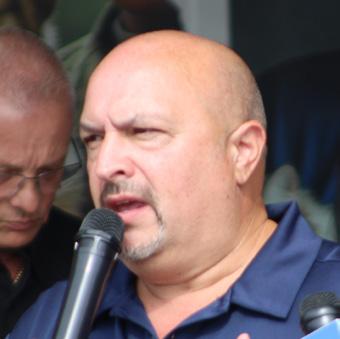

Paws of War was started by Rob Miseri (pictured) in 2014. With the mission of “helping both ends of the leash,” Paws of War aims to connect Veterans, service members, and first responders with service dogs, in turn, giving shelter dogs a new home and purpose. Service dogs provide a wide array of services, such as calming symptoms of PTSD, providing seeing-eye support for the visually impaired, or simply being a companion of unconditional love when it’s needed most.
Paws of War has their animal shelter and training facility in the Nesconset Plaza on Portion Road, across the library and gazebo, but just cut the ribbon on their next-door venture, a Veterans’ resource center.
The center, while simple in execution, is expected to provide critical services to Veterans and first responders. With a lounge and separate offices, Paws of War can extend counseling, therapy, and other types of intervention to improve the mental health of Suffolk’s Veterans and hopefully curb the alarming rates of suicide among the community.
“We are fully engaged in the service to our uniformed partners in law enforcement, fire services and emergency medicine, our first responders. We never want a first responder to not know that Paws of War is a resource for you as well,” said Tom Ronayne, a U.S. Navy Veteran and service member at Ground Zero after the September 11 attacks. “The number of lives that we have changed is innumerable and every one of those successes is on Robert [Miseri]. Every Veteran, every first responder, every family that has benefited through a relationship with calls of war is because of Robert’s vision and his commitment to carry it through to where we are today.”

A slate of Veterans and first responder groups attended, including, but not limited to, Director of the Suffolk County Veterans Service Agency Marcelle Leis, Colonel Shawn Fitzgerald and Command Chief Master Sergeant Edward Rittberg of the 106th Rescue Wing at Gabreski Air National Guard Base, American Legion Post #1244 of Greenlawn, the Joseph Dwyer Veterans Peery Support Program, the Patriot Guard Riders, the Suffolk County Police Department, and the Suffolk County Police Veterans Association.
“Without this space, without these contractors that built this space out, without the support, we could not take them [these cases] on,” Miseri told attendees. “Every day, there’s a crisis that we have to handle. It’s a Veteran, first responder, and their animal, their pet, their cat, their dog, their service animal.”
Miseri added that many of those in need find Paws of War through third-parties or word-of-mouth, including an attendee that morning, who had become homeless after no longer being able to work after his wife passed away. His dog was in need of medical care, which Paws of War was able to help facilitate with a veterinarian hospital. The Vietnam War and Grenada Veteran has now found temporary housing for him and his dog.
“The cases don’t stop,” said Miseri, recounting a recent case of a nine-year Navy Veteran who, along with her five cats, had been kicked out of her house by her husband. “We have Veterans who are living in their vehicles because they have nowhere to go. They have no place that’ll take their dog. And these are the kind of cases that come through this door every single day.”
Ray Meyer was heralded by Ronayne for his work at Paws of War, handling matters from moving equipment to comforting anxious rescue dogs. Meyer also discussed the number of contract agencies who helped construct their new offices.
“We spent about two years from the beginning of this project, we spent the whole year trying to find the right partner who had the same mindset as us for the project. It took us almost a year,” said Meyer, recounting a tale of a circumstantial golf outing that led connections being made within the labor unions and local shops to help give back to an organization that helps Vets and their pets.

“I am so honored to be standing here, because guess what? I was almost not here,” said Marine Corps Veteran and Paws of War Veteran Advocate Mike Kilano (pictured). “I couldn’t get out of my car with the PTSD. Fast-forward a couple of years and to see all you beautiful people and to see such a wonderful, crucial organization that not only helped me, but many countless lives that I’m looking at in this crowd right now. So I thank you for allowing me to be part of such a beautiful thing.”
Kilano told anyone who might be struggling: “We have your back.” Kilano was one of the thirty Veterans who kayaked twenty-two miles from Bridgeport to Port Jefferson last month to honor the average of twenty-two Veterans who take their own lives each day.
“Mike’s story represents a number of things and some of them might not be obvious,” said Ronayne. “Mike represents, possibly, another funeral that we did not have to attend. He represents a family whose children got to wake up again this morning. They don’t live with one parent or the other because one has become a statistic.”
The ribbon-cutting was attended by a host of elected officials from across the county. Attending in person were Senator Mario Mattera (R-St. James), Assemblyman Michael Fitzpatrick (R-St. James), Babylon Town Councilman Du Wayne Gregory (D-Copiague), Suffolk County Comptroller John Kennedy (R-Nesconset), County Clerk Vincent Puleo (R-Nesconset), and Suffolk County Legislator Leslie Kennedy (R-Nesconset). Representatives attended on behalf of Suffolk County Executive Ed Romaine (R-Center Moriches), Congressmen Nick LaLota (R-Amityville) and Andrew Garbarino (R-Bayport), Suffolk County Legislators Nick Caracappa (C-Selden) and Chad Lennon (C-Rocky Point), Senator Alexis Weik (R-Sayville), Babylon Town Supervisor Rich Schaffer (D-North Babylon), Huntington Town Supervisor Ed Smyth (R-Lloyd Harbor), and Islip Town Councilman John Lorenzo (C-West Sayville).
Paws of War is located at 127-6 Smithtown Boulevard in Nesconset and can be reached at 631-406-6595.

Thursday, October 3, 2024
By Matt Meduri
National
The Southeast and the country overall are reeling from the devastating effects of Hurricane Helene.
Helene was tracked as a fast-moving tropical cyclone last week. After just two days of its formation, it reached Category 4 intensity, making landfall in Florida’s Big Bend region. Helene is the strongest hurricane to have ever struck this part of the Florida Panhandle. After its initial landfall as a Category 4 storm, Helene weakened into a Category 2 as it cruised into Georgia.
As of press time, fatalities are at least 170 and still climbing, with almost 700 still missing, and millions without power and other utilities. Damage estimates are also certain to continue surging, with at least $27 billion in damages recorded so far. Its highest winds were recorded at 140 miles per hour.
Helene is the deadliest hurricane to hit the U.S. since Hurricane Katrina in 2005.
Perhaps hit the worst were mountainous regions of Appalachia, particularly western North Carolina. The village of Chimney Rock, located just east of Asheville with a population of about 140, is “virtually gone,” according to residents and sources on the ground. What was once a charming mountain town is now essentially a valley of mud and debris. Chimney Rock had initially seemed to have not been affected directly by Helene itself, but rather a dam breach that inundated the village and swept away cars, buildings, and roads.
More grisly accounts of the damage up the coast consist of bodies being recovered from trees, a harrowing display of just how catastrophic this storm was.
In addition to devastating flooding, infrastructure was also badly damaged across the Southeast, with supplies being delivered by air and even mules to locations inaccessible by vehicle. Mountain Mule Packer Ranch is employing strings of pack mules to brave the dangerous terrain to otherwise inaccessible locations (pictured below)

Some are also reportedly embarking on hours-long hiking trips to access other areas to assist in the recovery. North Carolina’s rural communities have been hit particularly hard, with potable water remaining a top concern of state officials. About 160 “boil water” advisories were in effect as of Tuesday, with twentyseven water plants closed.
In some good news of the tragedy, search-and-rescue teams have evacuated over 5,000 victims as of Tuesday, with 400 having been rescued by the North Carolina National Guard, along with 110 pets. According to the governor’s office, twenty-five shelters are housing almost 1,200 people in western North Carolina.
However, over 400 roads still remain closed in the state, with the government focusing on repairing primary roads first.
Former President Donald Trump (R-FL) set up a fundraiser on GoFundMe to benefit victims of Helene, which, as of Tuesday, had already garnered $2 million in donations. Trump already visited Valdosta, Georgia, on Monday, with supplies in tow. President Joe Biden (D-DE)
is slated for a Wednesday visit to North Carolina, while Vice President Kamala Harris (D-CA) is also reportedly planning a visit to the area.
Trump also called on his personal friend Elon Musk, CEO of SpaceX and X, formerly known as Twitter, to increase Starlink satellite Internet service to the area. Musk wrote on X, “We’re getting as many Starlinks as possible to areas affected by the hurricane.”
In a shocking twist of events, New York City Mayor Eric Adams (D) has been indicted on federal charges that allege bribery, conspiracy, fraud, and two counts of soliciting illegal foreign campaign donations.
Adams is the first sitting New York mayor to be charged with a federal crime.
The saga apparently began in November 2023, when The New York Times reported that Adams was being investigated by the FBI regarding an alleged influence by the Turkish government to have its New York City consulate building approved without a fire inspection. Adams was indicted on September 25, but the indictment remained sealed until the next day.
The unsealed fifty-seven-page indictment shows that the allegations extend as far back as 2014, when Adams was serving as Brooklyn Borough President. Adams is accused of having received luxury travel and gifts from Turkish dignitaries, one of whom is a Turkish government official. According to the indictment, Adams allegedly pressured the New York City Fire Department to open the Turkish consulate without the proper inspections.
Adams is then alleged to have made false paper trails to show that he had paid for the luxury trips in full, entering a plea of not guilty on September 27.
Adams has said that the charges are “entirely false” and “based on lies.” Adams has called for an immediate trial and a dismissal of the bribery charge. He calls the bribery allegation “extraordinarily vague,” one that was mounted by what he calls “zealous prosecutors.”
Some correspondents who have covered Adams for years say that he was “always of interest” during his time in the State Senate.
Adams is now facing calls to resign, with Congressman Jerry Nadler (D, NY-12), the dean of the New York congressional delegation, saying on social media that Adams “deserves the right to due process,” but that his belief is “that the mayor has lost the ability to effectively lead the City of New York, and therefore, he must resign.” Nadler is the highest-ranking Democrat to officially call for Adams’ resignation, but U.S. Senator Chuck Schumer (D-NY) and House Minority Leader Hakeem Jeffries (D, NY-08) fell short of issuing such a mandate. Jeffries said in a statement that Adams is “entitled to the presumption of innocence,” with Schumer remarking “no one is above the law” and calling for the legal process to move “speedily and fairly.”
However, a much bigger problem might be brewing: Governor Kathy Hochul (D) is reportedly examining the powers at her disposal.
Although Hochul has not made a decision on what steps to take with Adams’ mayoralty, the dust is apparently being brushed off the law books to resurrect a power not invoked by the governor in nearly one hundred years.
“I will be deliberative, I will be thoughtful, but we’re going to come to the right resolution on what to do in this moment,” said Hochul.
There are legal and constitutional provisions that allow the governor to remove an elected official, but the accused must receive the chance of a proper defense. In lieu of a formal removal from office, a governor can suspend a mayor for one month while charges and penalties are considered.
However, there is debate over just how absolute this power is.
The last time an elected official in the state was removed from office by the governor was in 1932, when then-Governor Franklin D. Roosevelt (D) removed Manhattan Sheriff Thomas “Tin Box” Farley, who got the
axe for padding his office’s payroll. He was given the nickname “Tin Box” for having spent money found in a “tin box” during his time as county clerk. Going back earlier, three borough presidents were removed from office in the early 1900s.
As far as New York City mayors go, Governor Roosevelt was deemed to have absolute power to remove Mayor Jimmy Walker from office. A 1932 ruling found that the governor’s powers to oust other elected officials was practically unbridled. The judge in that decision found that while the mayor has the right to have witnesses testify before a governor, the governor need only answer “to the people and his own conscience,” as far as legal protocol seems concerned.
President Trump also included himself in the carnage, alleging that Adams’ intention to pump the brakes on the state’s migrant crisis resulted in the indictment a year later.
“I watched about a year ago when he [Adams] talked about how the illegal migrants are hurting our city, and the federal government should pay us, and we shouldn’t have to take them. And I said: ‘You know what? He’ll be indicted within a year.’ And I was exactly right,” said Trump. “Because that’s what we have — we have people that use the Justice Department and the FBI at levels that have never been seen before.”
Adams has also made an interesting allusion to Trump’s claim: “I always knew that if I stood my ground for all of you that I would be a target, and a target I became. I put the people of New York before party and politics.”
Interestingly, progressive Democrats have been ready for Adams’ resignation even before the indictments, arguing that Adams is incapable of governing the city effectively. Congresswoman Alexandria Ocasio-Cortez (D, NY-14) called for Adams to quit the job just hours after news of the indictment broke.
Due to conservatives and moderates bailing on Adams, along with intraparty dissensions, Adams’ 2025 re-election bid seemed essentially dead-on-arrival. It’s unclear just how badly that will impact his ability to win the general election, but a primary could be a much tougher hurdle for him to clear.
Suffolk County Executive Ed Romaine (R-Center Moriches) announced last week that the county’s bond rating from Fitch Ratings has been upgraded from A- to A. In their review, Fitch noted that the County is “implementing operating efficiencies” and “budgeting tax revenues more conservatively” as their primary reasons for the rating upgrade. Fitch has also noted the County’s “continued budgetary stability and maintenance of a sound reserve position.” The latter two findings leave room for another upgrade from Fitch for another fiscal metric, “resilience assessment,” an evaluation of a government’s ability to maintain reserves and control expenditures. This includes budgetary flexibility, which is often accompanied by a government’s ability to raise revenues independently in a time of budget fluctuations, as well as how much of a government’s spending is covered by reserves.
“This sets the stage for future upgrades as we continue to budget responsibly while we ‘right-size’ government and deliver the services expected by the residents of Suffolk County,” said Romaine. “The rating increase will save millions of taxpayer dollars over the long term based on the County’s newfound ability to sell bonds at a decreased interest rate.”
Fitch says that the upgrade is also due to the County’s reversal of a past trend of “structural budgetary imbalances” and using non-recurring revenues. The bond rating upgrade comes just days after Romaine submitted his 2025 Proposed Operating Budget to the County Legislature.
Fitch is not the only financial firm to upgrade the County’s credit outlook. In February, Standard & Poor’s (S&P) Global Ratings upgraded Suffolk County’s general obligation (GO) bonds from AA- to A+ with a stable outlook.
The resolution had the unique distinction of every Legislator signing on as a cosponsor, which was then signed into law by County Executive Ed Romaine (R-Center Moriches) in April.
This past Sunday was the first newly-designated September 22 in the eyes of Suffolk County. A solemn memorial was held at Heritage Park in Mount Sinai on Sunday afternoon.
“Today, we take the steps in recognizing that we have an issue, and recognizing that we have an issue is how we’re going to solve an issue,” said Legislator Lennon, a Marine combat Veteran and current Reservist who served as the ceremony’s keynote speaker.
“Suicide may not be an issue by itself, but that’s what it means when it’s ‘layered.’ Homelessness, unemployment, depression, physical pain, and other mental health issues our service members are in,” said Lennon. “This is what leads to a feeling of hopelessness.”
Lennon, who also serves as Vice Chair of the Veterans Committee, added that such issues are not reserved for those who saw combat, but for those who serve in general.
“You might be stationed in any one of our military bases around the country thinking that you are in the American culture. The reality is you’re really not,” said Lennon. “In your station, you are in a different culture. You are told ‘this is your lane, you stay in your lane.’ You ensure that everyone else stays in their lanes. You might be living on base, and when that time comes to transition out of the military back into civilian life, all of a sudden, you discover everyone is in each other’s lanes. You don’t know where to go. You feel overwhelmed.”

Lennon said that despite his current title as “Legislator,” the title that will “remain” with him “forever” is that of “Marine, Veteran, and brother to every single service member, Veteran, Blue Star Family, and Gold Star Family.”
“I don’t care where you are or where you live, if you need help, please call my office, said Lennon, further recommending that the public take action to intervene on behalf of others’ suicidal ideations.
“Let’s do twenty-two phone calls, let’s do twenty-two ‘buddy checks,’ and make sure we’re all doing okay. It doesn’t take a mental health specialist to make a difference, but a shoulder to lean on,” said Lennon. “Together, all of us as a community, are going to get this number twenty-two down to where it should be: zero.”
Lennon also remarked on Suffolk County’s large Veteran population: the largest in the state and second-largest in the country, behind San Diego. New York also has the sixth-largest Veteran population in the country.
“We here in Suffolk County are going to set the example for the rest of this country to follow to bring this epidemic to a close,” said Lennon.
A small fair was also held in conjunction with the remarks to provide resources to Veterans who might be struggling with the issues discussed.
A host of Veterans’ organizations were also present, including, but not limited to, Paws of War, Warrior Ranch Foundation, Blue Star Mothers of Nassau and Suffolk Counties, as well as the Yaphank Civic Association, the Sound Beach Civic Association, and Jake’s 58 for providing logistical and community support for the event.
The North Shore Youth Council (NSYC), who hosts their events in the Heritage Center at the park, hosted the event. After renovations on the property, the gilded sign stating “Not all wounds are visible” will remain on the park grounds permanently.
In attendance also were Suffolk County Legislators Nick Caracappa (C-Selden), who serves as Chair of the Veterans Committee, Steve Englebright (D-Setauket), Rebecca Sanin (D-Huntington Station), Tom Donnelly (D-Deer Park), Suffolk County Clerk Vincent Puleo (R-Nesconset), State Senator Tony Palumbo (R-New Suffolk), Assemblyman Ed Flood (R-Port Jefferson Station), and Assemblywoman Jodi Giglio (R-Baiting Hollow).
Heritage Park and the Heritage Center are located at 633 Mount Sinai-Coram Road in Mount Sinai.


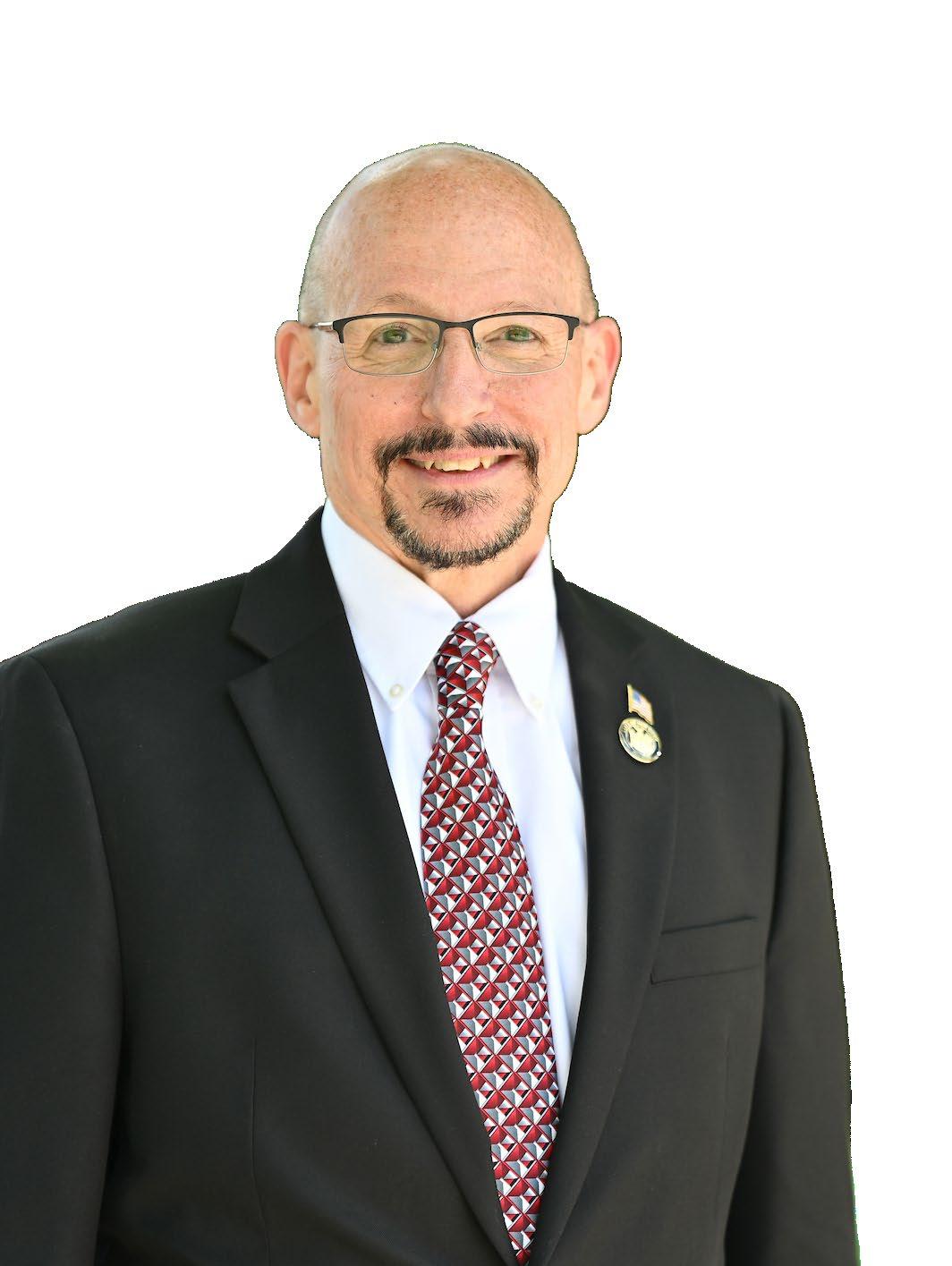
As the publisher and founder of the crime-fighting website, www.LiFugitiveFinder.com, Dean knows how important it is to work with and support law enforcement, which is why










•
•



The impacts to Medicare Beneficiaries will begin in January 2025 based on the implementation of the Inflation Reduction Act. If you are a Medicare Beneficiary, you need to understand these changes. The intent of the healthcare portion of the Act is to provide affordable treatments and financial relief to millions of people.
BUT - How will this impact you and your coverage?
The healthcare changes Primary focus is on lowering prescription drug costs for those individuals utilizing high cost medications, expanding Medicare subsidies and making other healthcare improvements.
These changes will impact Medicare Beneficiaries in various ways. The law brings several positive changes.
Four key areas of impact include:
Medicare’s empowerment to negotiate with drug companies to lower prices.
Drug companies won’t be prevented from raising Medicare prices above the inflation rate but companies who do this will have to pay Medicare a rebate.
A new cap on Medicare Beneficiaries annual cost for drugs. (Cap $2,000)
$35 monthly cap on insulin cost-sharing.
While these show the current positive changes, there is uncertainty on the impact to other areas of your Medicare health plans. Will:
My Premiums rise?
My Co-Payments Increase?
All my current medications still be covered? This impact the development of new medications?
As you can see there will be both positive and negative effects. So now more than ever, it’s important to review your current plan to eliminate surprises in the future.
"We do not offer every plan available in your area. Currently we represent five organizations which offer fifteen products in your area. Please contact Medicare.gov, 1-800-MEDICARE, or your local State Health Insurance Program to get information on all of your options."
Cap on annual costs of prescriptions (2000 dollars)
35 dollar cap on insulin
Elimination of the “Donut Hole”
HOWEVER, THERE IS UNCERTAINTY ON OTHER AREAS OF MEDICARE HEALTH PLANS:
Will premiums rise?
Will co-payments

Rob Perricone
B: (631) 268-5433
C: (631) 294-3729
rob@CoverageSolutionsGroup.com www.CoverageSolutionsGroup.com
By Matt Meduri
Gubernatorial contests in the U.S. are of particular note as they offer the sole remaining hint of competition in all fifty states. We’ve written before in multiple columns how a governor’s race is much different from that of a U.S. Senate, presidential, or other statewide contest. It’s one that is reflective of the state of the state, candidate quality, local issues, and one where the national or state brand of a party could significantly kneecap that party’s ability to win in a state in which they would otherwise have no trouble.
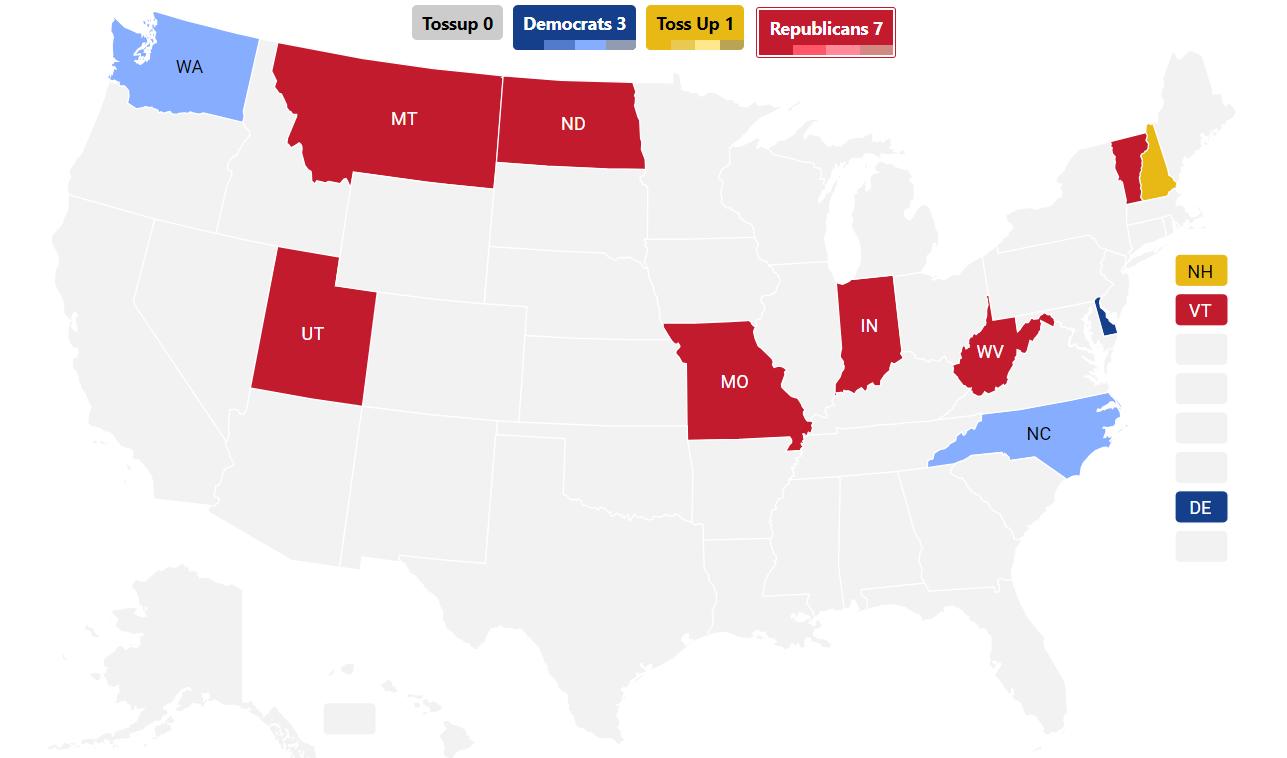
For context, twentyseven states are governed by Republicans and twenty-three by Democrats. For the most part, the governors are mostly along partisan lines with recent presidential and senatorial elections for context, but there are some notable outliers. Republicans govern solidly-blue Vermont, as well as blue-leaning New Hampshire and Virginia, while Democrats govern the ruby-red states of Kansas and Kentucky. Republicans also leveraged local issues and the COVID-19 Pandemic response to oust an incumbent Democrat in Nevada in 2022.
Since gubernatorial terms are four years in all but two states, Vermont and New Hampshire, their elections are on regular intervals, save for special elections. The midterm years host more competition with thirty-six states’ governors’ terms ending on such years. The presidential years, however, offer much less in terms of raw numbers of expired terms, and this year offers much less than a typically competitive year would.
Only two states have highly competitive gubernatorial elections this year: North Carolina and New Hampshire. Two swing states in almost every sense of the word, their open-seat contests are likely to have large ramifications for policy and direction based on November’s winners.
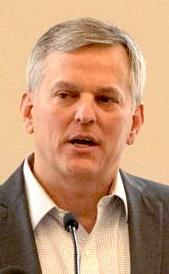
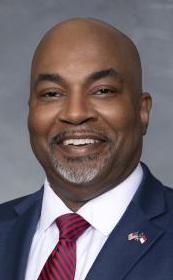
presidential race since 1976. Since then, however, Democrats have had trouble at winning statewide races in North Carolina. Mitt Romney (R-MA) flipped the state in 2012, while Republicans flipped a Senate seat in 2014. A changing state, it’s worth noting that North Carolina is markedly more Republican leaning than its counterparts simply due to elasticity, a topic we recently discussed in our Civics 101 column. Briefly, North Carolina is seen as an “inelastic” state, one without much middle to court and where annually competitive statewide elections come down to which party can turn more of their voters to the polls.
That’s a dynamic that’s largely in play in North Carolina, but one that might be overshadowed by the core nature of gubernatorial elections. Republicans last won a governor’s race here in 2012, the same year Romney flipped the state red to keep it stubbornly in the red column, despite Democrats’ strongest efforts. In 2016, Governor Pat McCrory (R), then seen as the king of the GOP in North Carolina, became the first sitting governor of the state to lose a re-election bid since 1850, most of it due to about 7,000 votes in a few precincts of Mecklenburg County (Charlotte) that had flipped to Roy Cooper (D) over a largely unpopular toll plan for the city’s section of I-77.
This seemingly-innocuous issue cost McCrory the election among constituents who had voted for him in 2012 and who had backed Donald Trump (R-NY) for president that same year.
Cooper leveraged his moderate profile with a Republican-led legislature to win a narrow second term in 2020, even as Trump carried the state by about half the margin he did four years prior. Now, Cooper is term-limited, and the race is open between Lieutenant Governor Mark Robinson (R) and Attorney General Josh Stein (D).
Initially, Robinson had led most of the polls or kept the race within the margin of error. But many red-leaning voters in the state appear to be turned off by Robinson’s staunchly-conservative messaging, especially when they’ve opted for softer, more moderate governors in recent years. Presidential coattails, however strong they may be in a state that seems likely to back Trump again, aren’t likely to insulate any candidate of any party from a rude awakening on Election Day when gubernatorial races are the topic.
At this point, it seems the race has started to
unravel for Robinson. Stein has held consistent doubledigit leads in the race for weeks, making us think a “Leans Democrat” rating is more appropriate than “Toss Up.” We had considered a “Tilt Democrat” rating, but sat it out in anticipation of polling that gives us a different idea.
While a Republican winning this seat this year isn’t surprising itself, it would be surprising to see Robinson dig himself out of the hole with only one month to go until Election Day.


The nation’s second marquee gubernatorial race comes from the Granite State. New Hampshire, while blue-leaning at the top of the ticket, is much more complicated down the ballot. In 2016, it was the closest state that Hillary Clinton (D-NY) won that year – a margin of just about 0.4%. That same year, Chris Sununu (R) flipped the open gubernatorial seat vacated by Maggie Hassan (D) in a close contest. On the same night, Hassan would oust one-term Senator Kelly Ayotte (R) in the closest Senate race of the election. Democrats would also flip NH-01 in the House, giving Democrats full control of New Hampshire’s congressional delegation for the first time since 1854.
Sununu would go on to win a close race in 2018, leveraging his moderate brand of Republican politics in a more intrinsically libertarian state. He was resoundingly re-elected in 2020 and 2022 and opted against a historic fifth term this year. New Hampshire, along with Vermont, are the only states whose governors serve two-year terms without term limits.
This race is a pure toss up in every sense of the word, although it seems like Ayotte might have the slightest edge, only due to her predecessor’s popularity and her ability to win statewide. Still, it’s not enough to designate a “Tilt Republican” rating for the race. Ayotte faces former Manchester Mayor Joyce Craig. A hard-fought Democratic primary is what played out on the left, while Ayotte’s GOP primary win was a cakewalk. However, Ayotte didn’t get to benefit from a longer campaign trial due to intraparty fighting to her left. New Hampshire holds one of the latest statewide primaries in the country before Election Day, giving both nominees
Published by Messenger Papers, Inc.
Continued from previous page
a runway of just under two months to make their pitches to Granite State voters.
The race is also complicated by the fact that Republicans’ razor-thin majority in the state legislature is also in the balance. Just a few districts can tilt control of Concord to the Democrats, a dynamic of split-ticket voting we’re sure will be on display, as New Hampshire has been prone to in recent years, notably 2016.
For this one, we’d say Ayotte is ever so slightly in the driver’s seat, due to her familiarity across the state and her small leads in what few polls have been taken of the race.
But the New Hampshire gubernatorial race is still a toss up in every sense of the word.


In deep-blue Washington, Republicans have the chance of a lifetime to end their longest gubernatorial losing streak in the country.
Republicans haven’t won a gubernatorial race in Washington since 1980, although they have come tantalizingly close more times than they have not. Washington was also a top battleground until 2008, with exceptionally close presidential races here in 2000 and 2004. In fact, the 2004 gubernatorial race went to Christine Gregoire (D) by a margin of just 129 votes out of over 2.5 million cast, making it one of the closest elections in U.S. history.
2012 saw the rise of now-Governor Jay Inslee (D), who is declining to seek a fourth term in a state that does not impose term limits. Inslee won by just three points then, and despite Hillary Clinton taking Washington by just over fifteen points, Inslee was only re-elected by a nine-point margin.
Inslee’s 2020 margin was stronger, but thirteen points is relatively underwhelming for a state as blue as Washington and for a governor who was not disastrously unpopular at the time, and that race featured Loren Culp (R), a candidate seen as too far to the right for the state.
2024 features the first time this seat is open in over a decade. Conventional wisdom rates this as a lock for Democrats, while most major forecasters rate the contest as “Likely Democrat.”
So, why do we rate it as “Leans Democrat?”
Our logic comes from the fact that the seat is open, Attorney General Bob Ferguson (D) should have enough of a large base in Kings County (Seattle) to cushion a five-alarm-fire turnout-wise across the state, and that Republicans scored a top recruit for this year.
Dave Reichert (R) served not only as Kings

County Sheriff from 1997 to 2005, but also as a Congressman representing WA-08 from 2005 until 2019. WA-08 is one of the most evenlydivided districts in the country, taking in suburban Seattle, Tacoma, and the exurban areas. Reichert probably would have been able to hold onto this seat in 2018 had he opted to run again, despite it being a good Democratic year.
Reichert comes from the population, cultural, and economic epicenter of Washington and represented the population in some form for over twenty years. To say that Democrats should be scared of this recruit is an understatement.
A big aspect of primary elections in Washington is the top-two system, wherein all candidates for the same office appear on the same ballot, regardless of party, and the top-two vote-receivers advance to the general election, also regardless of party. Republicans don’t usually get boxed out of the contest for the state’s top job, so they avoided that hurdle. But the bigger one comes in analyzing margins within the top-two results. Ferguson captured 44% of the vote out of a massive field of almost thirty candidates. Reichert took 27%.
The big equation with top-two primaries is combined vote totals between all candidates of their respective parties. With combined totals, Democrats took about 55% of the total statewide vote and Republicans’ took about 41%. This isn’t a blowout, but it’s not exactly as close as polls are showing, which is where another grain of salt comes in.
Polls as early as the spring showed Reichert leading primary and general election polls, with polls not showing Reichert ahead didn’t put him far behind. Ferguson has expanded his leads somewhat over the summer, reaching a peak of 50% in a September 6 poll by Elway Research. Washington, as far as the gubernatorial election is concerned, is in play for this cycle. We believe Ferguson assumes first position at this point based on fundamentals, but the gap can be closed by Reichert, provided he gets the resources he needs. A single-digit margin here wouldn’t be a shock, markedly better than Republicans’ pitiful performance in the 2022 Senate race that was, according to polls, statistically tied for the home stretch.
Perhaps of more interest in Washington is the race for Public Lands Commissioner, a statewide position. Former Congresswoman Jaime Herrera Beutler (R, WA-03) ran as a moderate who earned Trump’s eternal wrath by voting to impeach him in 2021. Trump never forgave the move, successfully
helping Herrera Beutler lose her primary in 2022. Joe Kent (R) would go on to lose the red-leaning WA-03 in what’s considered the biggest upset of that cycle.
But Herrera Beutler might get the last laugh. Some surveys suggest she’s in a better position to take this race than Reichert is to take the gubernatorial race. It wouldn’t mean much on the national scale, besides a Republican platform and image that’s electable in a state as blue as Washington, but it would certainly be of note.
Besides, Republican’s don’t control any of the nine statewide offices in Washington. We’re sure they’ll take a win where they can find one to improve that statistic.
Besides those three states, there’s not much else in terms of competition this year. Our map originally evolved with Indiana, Missouri, and Montana appearing as “Likely Republican,” only due to open-seat races in the former two and a quirky environment in the latter, which is perennially on-brand for Montana.
But we don’t see much engagement here. Democrats were optimistic about Missouri’s gubernatorial seat in 2020 and didn’t come close. Republicans also flipped Montana that same year by a wide margin, ending sixteen years of Democratic governance in Helena.
Interestingly, Republicans’ safest gubernatorial bet is Vermont, otherwise the bluest state in the union top-down. Fiscally conservative and socially liberal four-term Governor Phil Scott (R) is immensely popular in Vermont and regularly ranks as one of the most - if not the most - popular governors in the nation. Scott’s 71% share of the 2022 vote is the largest statewide margin for a Vermont Republican since 1950.
Republicans are also strong favorites to hold North Dakota, Utah, and West Virginia. Governor Spencer Cox (R-UT) had a primary challenge from his right over the summer, but came out on top and is highly likely to secure a second term based on fundamentals.
The only state where Democrats have a safe bet this year: Delaware. Last governed by a Republican in 1993, the First State has regularly elected Democrats to the top post by lopsided margins in each election since then, with 2004 as an exception. The term-limited John Carney (D) is likely to be replaced by New Castle County (Wilmington) Executive Matt Meyer (D).
Thursday, October 3, 2024
By Matt Meduri
A couple issues ago, we reviewed the first ten amendments to the U.S. Constitution, commonly known as the Bill of Rights. This week, we’re dedicating an entire page to the Twelfth Amendment, one whose text is as lengthy as its history. We haven’t skipped the Eleventh Amendment, we’ll just return to it at a later date.
The Twelfth Amendment sets guidelines for how presidential and vice presidential elections are administered from the end of the federal government, rather than the strict provisions of voting within each state. Our fledgling nation had provisions for formally electing a president, but within just a few years, it would become apparent that the Constitution needed some revisions in the overall process.
This column will seek to address the long-forgotten concept of civics and how it relates to American government in general, from the federal level to the local level. This column will explore Constitutional rights, the inner workings of government, the electoral process, and the obligations and privileges of citizens. Published by Messenger Papers,
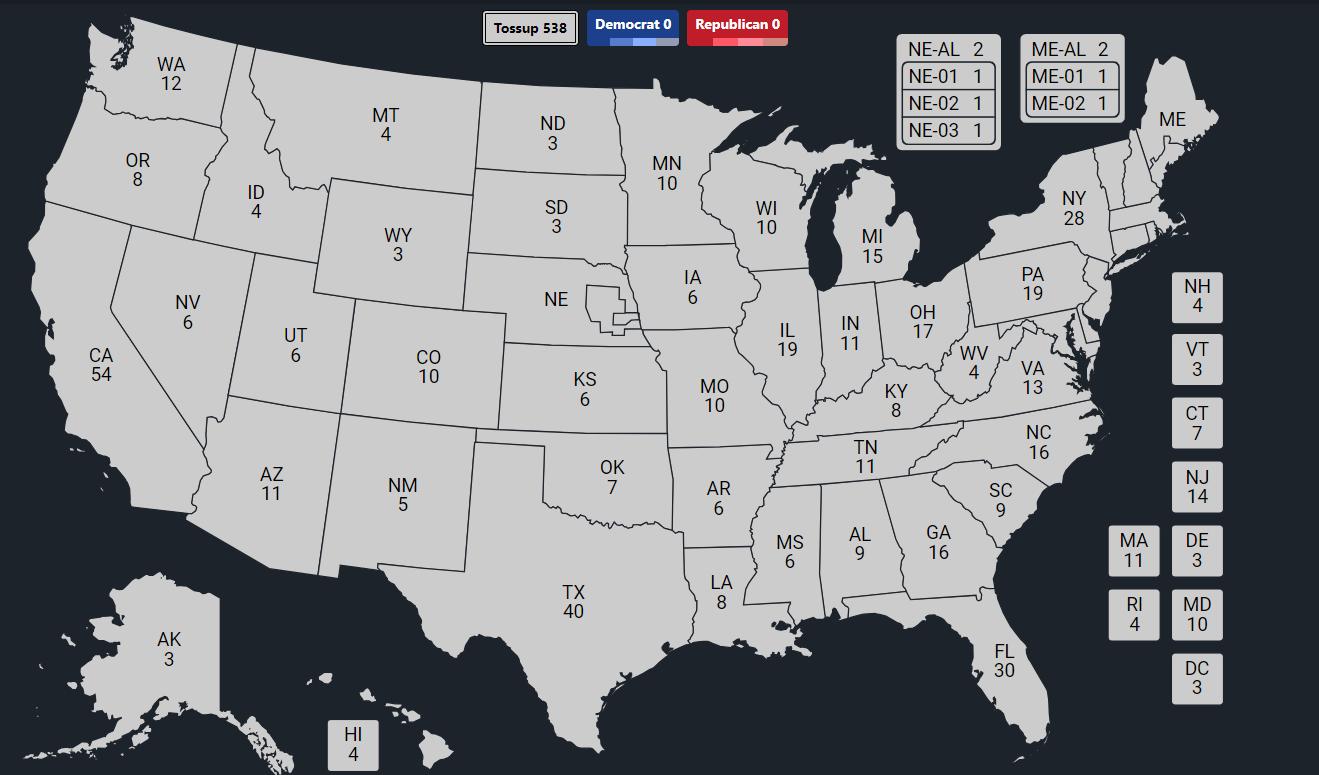
The two political parties at the birth of our nation, the Federalists and the Anti-Federalists, had different views as to how comprehensive language surrounding government powers should be, primarily because lack of clarity could leave the door open for violations of liberties. Federalists argued that a strong central government was tantamount to preserving individual liberties, while the Anti-Federalists wanted more power to the states and a decentralized form of government. The Massachusetts Compromise spawned from the state’s delegation’s contentions, which caused a fistfight between Federalist Francis Dana and Anti-Federalist Elbridge Gerry, from whose actions the term “gerrymander” was coined. The compromise allowed for amendments to be proposed at the convention when ratifying the Constitution and was created to the agreement of John Hancock and Samuel Adams.
Under the original procedure for the Electoral College, each elector cast two votes, with no distinction made between votes for president and vice president. Two votes were cast by each elector, with the winner of the most votes becoming president and the runner-up becoming vice president. The two candidates chosen by the elector could not hail from the same state as that elector, preventing “favorite son” picks from their home states
Two scenarios allowed the House of Representatives to hold contingent elections: if multiple candidates received the same number of votes - with that number being a majority of votes - or if no candidate had a majority. In the former scenario, the House would simply choose one of the two to be president. Under the latter situation, the House would choose from the five candidates with the greatest number of electoral votes. In both circumstances, each state delegation had one vote and a candidate was required to achieve an absolute majority of the votes, more than half of the total number of states to be president.
The vice presidential selection was easier: whoever received the second-largest number of votes in the election became vice president. A majority was not required, but only if the Senate had to pick a winner in the event of a tie.
The purpose of second place becoming vice president was part of the “best man” concept that the Founding Fathers had believed and sought to instill in the country. Whoever received the second-greatest number of votes was seen as second most-qualified to run the country. This concept was also markedly on-brand for the new nation who, as urged by George Washington, believed that political parties and gamesmanship would impede the work for the republic, as was the case in failed republics before. On paper, the logic for both concepts can be found, but neither concept panned out in reality.
This system worked for the first two elections - 1788 and 1792 - because George Washington was the unanimous choice for president both times. When Washington declined to seek a third term, it became apparent the electoral system needed an overhaul. In 1796, Federalist John Adams received a majority of votes from the electors, while Democratic-Republican Thomas Jefferson was the runner-up. It quickly became clear that having a president and a vice president of two conflicting ideologies was not going to be realistic.
The 1800 election was the location of another constitutional crisis, in which DemocraticRepublicans nominated Thomas Jefferson for president and Aaron Burr for vice president. The party had secured a majority of the electors for Jefferson, but the margin was so slim, that all Democratic-Republican electors from all states needed to be on board with the picks in order to prevent another crisis. Limited communication and a bold plan of nominating candidates on a separate party ticket only led to more confusion, as electors had no way of distinguishing who was running for which office.
The Democratic-Republican electors assumed one would abstain from the vote to ensure Burr became vice president, but all were unsure of the exact plan. No electors wanted to be the one responsible for handing John Adams the White House, resulting in a scenario that was later called
the Burr Dilemma: all electors voted for both Jefferson and Burr, resulting in a tie.
Thirty-five ballots ensued in the House, with neither Jefferson or Burr able to clinch a majority of votes. Alexander Hamilton helped shepherd the process through, allowing Jefferson to be elected president on the thirty-sixth vote.
The Twelfth Amendment Itself
The Twelfth Amendment reads that electors of the Electoral College are to meet in their respective states and vote by ballot for the president and vice president, one of whom, at least, is required to be an inhabitant of a state different from the other. Electors are not only required to cast their votes as decided by the population of their respective states, but they are also required to make lists of each person who received votes for president and vice president. Lists are signed and certified by and sent to the sitting Vice President, the President of the Senate.
The Vice President shall, in the presence of the U.S. House and Senate, open all certificates from the states and the Electoral College votes shall be counted. The person with the greatest number of votes within the college is elected, provided the number of votes the candidate has received is a majority of those available. If no candidate has a majority, then those on the lists of having received Electoral College votes are considered, and then a winner is selected immediately by the House of Representatives.
However, the vote taken by the House is a vote taken by states, rather than individual members of Congress. The congressional delegation from one state has just one vote. For example, New York has twenty-six representatives in the House, currently a delegation of sixteen Democrats and ten Republicans. In the case of an Electoral College tie - a count of 269-269 in the Electoral College - or a case of multiple candidates preventing any one from receiving at least 270 electoral votes, New York would have just one vote in the U.S. House-administered election for president, with the result likely backing a Democratic candidate.
A necessary quorum for the vote is members of the House from at least two-thirds of the states, with a majority vote necessary to name a president. The Twelfth Amendment, interestingly, does offer another backup plan if the House fails to select a president:
“And if the House of Representatives shall not choose a President whenever the right of choice shall devolve upon them, before the fourth day of March next following, then the Vice-President shall act as President, as in the case of the death or other constitutional disability of the President.”
In this case, the person with the greatest number of votes, with the backdrop of a majority vote, is elected vice president. If a majority for vice president is still not achieved, then the Senate chooses the vice president from the top-two vote-receivers on the certified and signed lists delivered from the states to the Capitol. Once again, two-thirds of the Senate is required to be present to call such a quorum, and a majority vote is required to name a successor.
In the end, the Twelfth Amendment stipulates that no person constitutionally ineligible to serve in either capacity will remain in or be elected to that seat.
The 1804 election was the first one to adhere to the new amendment, whereby the president and the vice president run on the same ticket and are formally elected by the Electoral College separately. Each election since then has operated under the current rules. There is no longer the possibility of multiple presidential candidates winning electoral votes from a majority of the vice presidential vote. It also ironed out the detail that no person constitutionally ineligible from serving as president is eligible to serve as vice president. There is also much more clarity of which candidates are running for which offices and ties are now much less common.
Under the Twelfth Amendment, only one election has seen the House invoke its power to select a president in the event of a tie: 1824. In this election, the Federalist Party was waning into irrelevance, as party politics and the national identities therein became inevitable in American society. Four major candidates ran, all on the Democratic-Republican line, as there was no strong opposition from the Federalist ticket. Senator Andrew Jackson, Secretary of State John Quincy Adams, Secretary of the Treasury William Crawford, and House Speaker Henry Clay all vied for the nation’s top job. No candidate received a majority of the electoral votes, and the House chose among the former three candidates. Jackson won a plurality of the electoral and popular votes, but the House elected John Quincy Adams as the sixth president.
This was the first of five occasions where the candidate who won the popular vote did not win the presidency, the only time that winner of the most electoral votes did not become president, and the only time the House has had to select a president in a contingent election.
1824 was also the first election in which the popular vote was fully recorded and reported. The popular vote has been decided by single-digits since 1988, the longest such streak since the states began popularly electing presidents in the 1820s. The process of moving the selection of electors to the hands of the public rather than the state legislatures was gradual, but by 1840, only one state - South Carolina - of the twenty-six at the time still selected its electors by the state legislature.


Statement required by the Act of August 24, 1912, as Amended by the Acts of March 3, 1933, and July 2, 1946 (Title 39, United States Code, Section 233) showing the ownership, management, and circulation of the The Brookhaven Messenger published weekly at Smithtown, New York, for the fiftytwo weeks ending September 26, 2024. Diane Caudullo deposes and says that she is the publisher and Matt Meduri is editor of the The Brookhaven Messenger and that the following is to the best of her knowledge and belief, a true statement of the circulation of the aforesaid publication for the date shown in the above caption, required by the Act of August 24, 1912, as amended by the Act of March 3, 1933 embodied in Section 537. Postal Laws and Regulations to wit: That the name and address of the Publisher is Diane Caudullo of Centereach, New York. that the officer of the corporation President James Cotgreave of Smithtown, New York; that the average number of copies sold or distributed through the mails or otherwise each week to paid subscribers during the twelve months preceding the date shown above is 1,190 paid mailed subscriptions and no sales through dealers, carriers, street vendors, counter sales for a total of 1,190. Free distribution outside the mail is 1,150 for a total distribution of 2,340. I certify that the statements made by me above are correct and complete.
Publisher Diane Caudullo 10/3/2024
Frank Pizza was the true definition of an angel on Earth. He was the kindest gentleman, and truly touched everyone that he met. He and his wife Felecia were together for 59 exceptionally happy years, and celebrated their 56th wedding anniversary on August 10th of this year. In addition to their love for each other, Frank adored his two daughters, Peggy, and her husband Bill, and Marisa, and her boyfriend Bill. Frank was the oldest of five, and adored his siblings, Carol (Andy), Bob (Kathy), Kathy (Ronnie), Maureen (Larry). He loved his godchildren, nieces and nephews, step-grandchildren, step-great grandson, his cousins and his brother in-law Bill. Frank’s friends have always meant so much to him, both those he met personally and professionally. Frank’s cats, Boots and Snickers, were two of his bestfriends.Helovedallanimals.FrankwasalifelongYankeefan, loved his pool, and loved weather. He also loved his community, and was very involved in his hometown of Farmingville. Frank was truly loved by all, and will be




Thursday, October 3, 2024
Continued from front cover
In honor of Stephen’s selfless sacrifice, his family established the Tunnel to Towers Foundation to support the families of fallen first responders and veterans. The annual 5K, which follows Siller’s path through the tunnel, has become a symbol of resilience, unity, and remembrance. The event raises funds for the foundation’s mission, which includes building mortgage-free homes for Gold Star Families and providing support to first responders injured in the line of duty.
This year’s 5K saw participants from all walks of life, families, Veterans, firefighters, police officers, and supporters from across the country that gather to honor the fallen. The race began in Red Hook, with participants either running or walking the 3.1-mile route. As they entered the Brooklyn Battery Tunnel, many runners paused, reflecting on


the sacrifice Stephen Siller made on that fateful day.
Emerging from the tunnel was an emotional moment for many. Lining the streets near the tunnel’s exit were 343 firefighters, each holding banners with the faces and names of the firefighters who died in the line of duty on 9/11. This tribute served as a somber reminder of the ultimate sacrifice made by these brave men and women, as well as the enormity of the loss felt by their families and colleagues.
Participants were also greeted by police officers and military personnel, holding banners with the names of those lost in the War on Terror and from 9/11-related illnesses.
The visual representation of the sacrifice made not just on 9/11, but in the years that followed, was a powerful and emotional moment for those walking and running in the 5K.
As participants made their way through the streets of Lower Manhattan, the run concluded at the World Trade Center Memorial Plaza, home to the memorial
fountains that mark the footprints of the original Twin Towers. Many participants took the time to walk around the fountains, where the names of nearly 3,000 victims of the 9/11 attacks are inscribed. For some, this was an opportunity to find the names of loved ones, friends, and colleagues who were lost that day.
Participating in the Tunnel to Towers 5K was a deeply moving experience. The act of walking through the same tunnel Stephen Siller ran through twenty-three years ago allowed the runners to connect with his heroism on a personal level. Seeing the faces of the 343 firefighters who died that day and the other first responders and military personnel who have died since was overwhelming. It invokes the selflessness of those who put their lives on the line for others. I looked for a close friend of my cousin, who was one of the 343 and was able to shake the hand

of the firefighter holding his banner. I was able to cheer on a family friend in the National Guard running as well. This foundation is near and dear to her heart.
The end of the race was marked by a moment of silence as participants gathered in front of the memorial fountains, paying their respects to those who never made it home. The sight of families standing together, some in tears, some placing flowers on the names of their loved ones, was a stark reminder of the enduring impact of the attacks on so many lives.
The Tunnel to Towers 5K is more than just a race. It is a powerful symbol of unity, remembrance, and hope. Every year, it brings together people from across the country to honor the lives lost on 9/11 and to ensure that their memory lives on. It also serves as a reminder of the
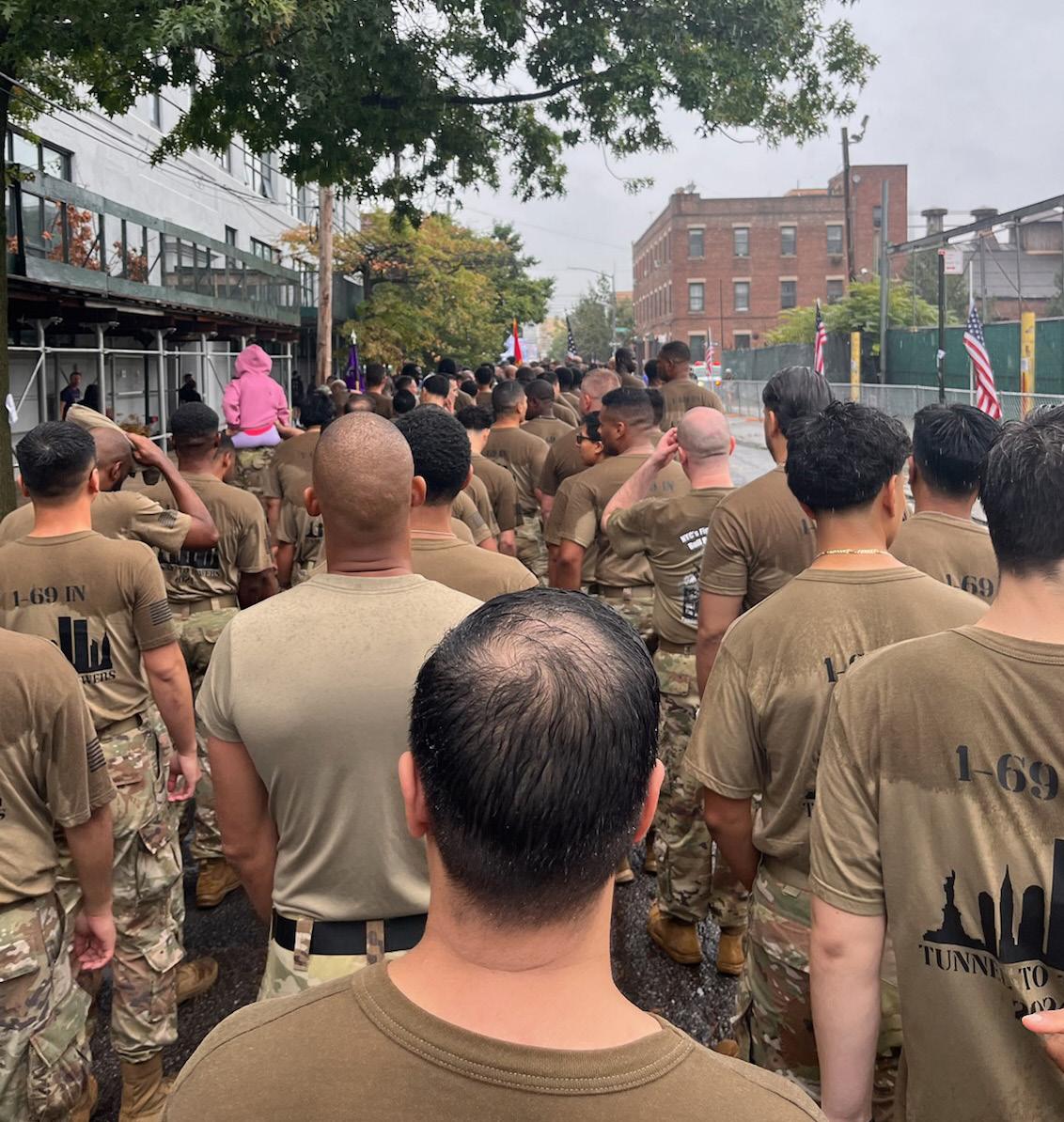
importance of service and sacrifice.
For many, including myself, the event was not just about running or walking a few miles. It was about reflecting on the heroism of first responders, the tragedy of that day, and the resilience of a nation that came together in the face of unimaginable loss. The experience is something I will never forget. It’s a reminder of what it means to be part of a community and to stand together in remembrance.
As the day ended, participants left with a renewed sense of purpose and commitment to the foundation’s mission. The Tunnel to Towers Foundation continues to support the families of first responders and veterans, ensuring that their sacrifices are never forgotten.
The annual 5K, now a cherished tradition, will continue to serve as a reminder of Stephen Siller’s legacy and the countless others who gave their lives on 9/11 and in the years since.
We will never forget.
Published by Messenger Papers, Inc.
By Hank Russell
A press conference was recently held at Mulcahy’s in Wantagh to announce a scholarship fund in memory of Detective Jonathan Diller, that will be given by St. Mary’s High School in Manhasset, Diller’s alma mater.
Diller was tragically murdered in the line of duty on March 25, leaving behind wife Stephanie and a young child. Oyster Bay Town Supervisor Joseph Saladino (R-Massapequa), alongside Stephanie Diller, members of St. Mary’s School and the NYPD, acknowledged Larry Weinberger, president of MGD Realty, for spearheading the scholarship initiative and contributing the first $5,000 to get it off the ground.
“Detective Diller’s dedication to police work, and his love of being a police officer, was apparent to all who knew him,” Weinberger said. “This fund will create a never-ending legacy for Detective Diller as every year the high school Jonathan attended, St. Mary’s, will select a student(s) in need of support pursuing their education and career goals.”
School Principal Gerard Buckley said the school is in the process of finalizing the criteria for the scholarship.
“The administration of Saint Mary’s High School is working alongside his widow, Stephanie, to ensure that the scholarship will be awarded to a student who has expressed a desire to pursue a law enforcement career and embodies her late husband’s values.”
A 2010 graduate of St. Mary’s High School in Manhasset, Jonathan learned the importance of values, service, community and respect while achieving academic success. This well-rounded education was important to him and led him to a career in law enforcement. Stephanie and her family want others to have the same opportunity that Jonathan did at St. Mary’s, which led to the creation of this scholarship initiative.
“The Town of Oyster Bay never forgets its hometown heroes, and Officer Diller sacrificed his life because of his bravery and undeterred commitment to serving the public and keeping us safe,” said Saladino. “He will forever be remembered as a hometown hero, and the Detective Jonathan Diller Scholarship Fund launched today will ensure people will forever remember him.”
“Jonathan always talked so fondly about his time there and he always was involved in sports and was very active and that’s what made him into the person he was,” said Stephanie. “I want the scholarship to go to someone who is just like Jonathan and to have that experience and to continue for people to become like him… We need more of Jonathan in the world.”
“St. Mary’s High School is pleased to announce that the memory and legacy of Detective Jonathan Diller, Class of 2010, will be honored by establishing a scholarship fund in his name,” said Eileen Symmons, communications director for St. Mary’s Parish and Schools. “Jonathan was our brother in Christ who led by example in the classrooms and on the lacrosse field. Detective Diller’s exemplary service as a police officer—and dedication to his family and the community—will be remembered through this scholarship as a lasting tribute. It will support deserving students in pursuing academic achievement, athleticism, teamwork, Catholic faith, and service.”
Buckley and Varsity Boys Lacrosse Head Coach Matthew Panetta attended and spoke at the announcement on behalf of St. Mary’s High School, where Jonathan was a popular student and lacrosse player from 2007 to 2010.
“We are grateful to Mr. Larry Weinberger of MGD Investments and his team for spearheading the fundraiser at Mulcahy’s on November 20, 2024, which will officially launch the Detective Jonathan Diller Scholarship Fund,” Buckley said. “We are immensely blessed and express our humble gratitude to Mrs. Stephanie Diller, who has generously directed all proceeds from the event to be donated to St. Mary’s High School in her husband’s name.”
A scholarship fundraiser will take place at Mulcahy’s, located at 3232 Railroad Avenue in Wantagh, on November
20, starting at 6:30 p.m., with the goal being to raise $100,000. Tickets are $65 and can be purchased by clicking here.

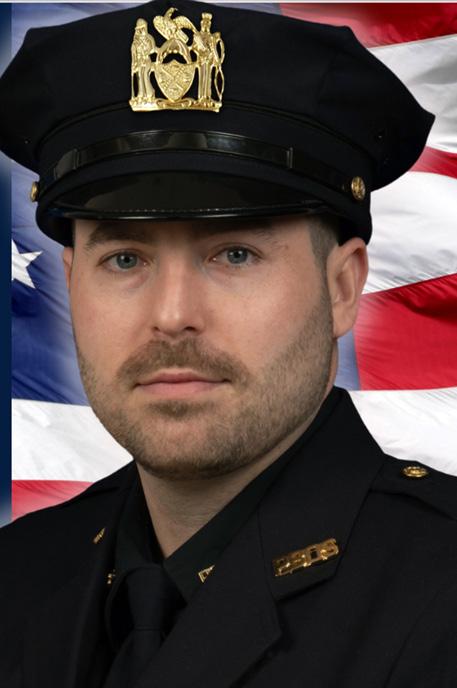
“With the generosity of the Long Island business owners, community members, and supporters from all over the region, we anticipate the scholarship will take seed and become a lasting tribute to Jonathan’s name, significantly impacting our school community and future students of St. Mary’s,” said Symmons.
Local businesses are also invited to participate in the scholarship fund by calling MGD Realty at (516) 409-1800 in advance to make arrangements.
To donate, go to https://www.saintmaryshs.org/list-detail?pk=222550&fromId=313976
This article originally appeared in Long Island Life and Politics. For more from LILP, visit them online at lilifepolitics.com.

By Matt Meduri
Last month, Suffolk County Legislators Trish Bergin (R-East Islip) and Rob Trotta (R-Fort Salonga) introduced a bill that intends to provide more scrutiny for County contracts with non-profit agencies.
The intention is to ensure that taxpayer funds are distributed to contract agencies for the purpose of reaching the end user, something the Legislators argue could be hampered by exorbitant executive salaries, with some eclipsing $400,000. The legislation, in its current form, would cap contributions if an executive makes more than the Governor of New York, which is $250,000. The legislation would also not apply to hospitals.
The bill, I.R. 1687, would also require donations made to such organizations to be disclosed, prompting fears from opponents of the bill that donor information would be leaked to solicitors and could kneecap valuable contributions.
The legislation received a significant amount of pushback at the September General Meeting, with dozens of community advocates, non-profit leaders, and former political candidates petitioning the Legislature to table the bill.
Tuesday’s General Meeting offered more insight into the community’s feelings on the bill, as the horseshoe fielded suggestions on how to improve the legislation.
“It’s been said over and over again how bad of a policy this is,” said Bob Vecchio (pictured right), Executive Director for the Nassau-Suffolk School Board Association, which represents about 97% of Long Island public school students. Vecchio added that Eastern Suffolk and Western Suffolk BOCES is governed by the State and the local board of education.
Prosperity Vs. Bonta, in which the Court ruled that a California law requiring non-profits seeking state funds disclose donors’ identities to the state attorney general was constitutionally invalid.”
The Legislature heard from a former political candidate in Jackie Gordon (D-Copiague) (pictured right), who had challenged Andrew Garbarino (R-Bayport) for the open seat of NY-02 in 2020, which she narrowly lost. Gordon challenged Garbarino to a rematch in 2022, capturing only 39% of the vote.

“When I moved to Long Island over 30 years ago, I had the opportunity to purchase my first home with the help of the Long Island Housing Partnership. That purchase became a pivotal moment in my life. It not only provided me with a home, but it allowed me to grow financially, giving me access to funds that later enabled me to purchase a larger home as my family grew, and to support my children’s, and even my own, college education,” said Gordon. “For over thirty years, people like the CEO of said organization have made invaluable contributions to our community…Limiting the compensation of non-profit leaders could undermine this, reducing the ability of these organizations to recruit the kind of leaders we need to deliver high quality programs.”
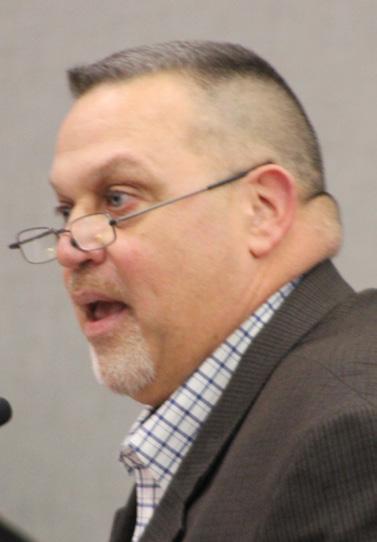
“For the county to interfere with local government units of the state of New York is improper and we can’t stand for it,” said Vecchio. “A lot of the funds that come through these grants are pass-through grants from the feds and the state that bring money into this county to provide much-needed services that otherwise would not be provided.”
One service in particular is that of the only recovery high school in New York, Aspire Academy in North Babylon, part of Western Suffolk BOCES.
“What is the purpose of this bill other than to create another level of bureaucracy if you’re going to have an exception committee look and review to see if somebody can get this grant?”
David Herold, President of the Board of Directors of Long Island Cares, expressed similar opposition.
“While I think we can all agree that the legislation designed to ensure taxpayer dollars are being spent responsibly is commendable, the passage of this legislation would create a series of negative consequences,” said Herold. “But the paramount concern here is that a salary cap would limit the ability to attract the best talent to our executive positions.”
Minority Leader Jason Richberg (D-West Babylon) (pictured below right) agreed with Trotta that with rising suicide rates and increased stresses on social services.
“I think we need these folks to be doing the good work,” said Richberg. “I think we need to be looking at different ways to analyze our contracts and our metrics like we’ve done in the past. And I think we should be working collaboratively to figure out how we can answer those questions. I think continuing this discussion is harmful.”
“There are people in our community who are hanging on financially by their fingernails and they’re having a really hard time understanding why their tax dollars are being used to fund a CEO’s salary of $150,000 a year,” said Bergin. “There’s already damage that’s been done by this bill. I respect my colleagues, but this damage is really significant,” said Legislator Rebecca Sanin (D-Huntington Station), who warned that she is aware of some contract agencies considering pulling their business from the County over the bill.
it currently stands.
“I’m all for transparency and oversight. I am not for overstepping jurisdiction,” said Caracappa. “As a labor leader in my past life, I always fought for the rights, for salaries that are deserving and not looked at based on someone else’s ideology of how much someone should make. That to me is absurd. If you’re successful, and your boss or your board supports your salary, then that’s what you deserve.”
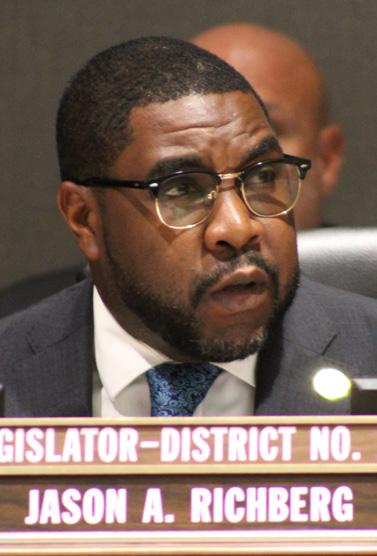
Caracappa said he also hopes to see Legislator Trotta’s constituents at the next meeting to voice their support.
“I am a labor leader, and I’ve been negotiating salaries for over 30 years. And never once at the bargaining table did we ever entertain a cap for anyone at the workplace. So philosophically, I can’t support this in its current form,” said Mazzarella, but contended that if the Legislature can “peel back the onion” to “shed light on some of the salaries that are paid to the lower-line people.”

Legislator Trotta (pictured top right) conversed with some of the speakers, defending his introduction of his bill and asserting that his constituents agree with him.
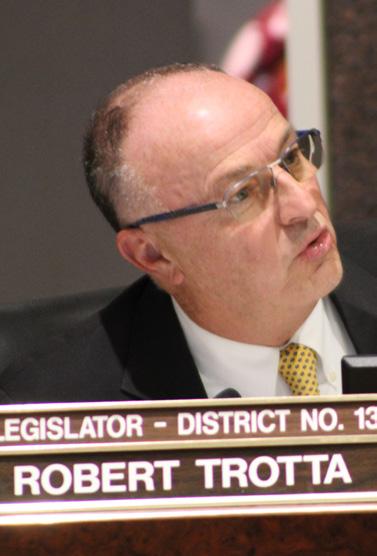
Legislators Jim Mazzarella (R-Moriches), Nick Caracappa (C-Selden), and Stephanie Bontempi (R-Centerport) all agreed that there could be oversight of executive salaries, but that they cannot support the legislation as
“I understand that the purpose of it was to ensure that taxpayer dollars are utilized in the most efficient and effective way. But if that is truly the goal, then there needs to be a complete overhaul of this legislation, and it needs to be something that doesn’t target non-profits,” said Legislator Bontempi.
All three members of the majority caucus support a recess to allow their colleagues to bring amendments to the table.
The meeting ended in an 11-6 vote to recess the legislation. All six Democrats voted against it and instead attempted a motion to table the bill, ending further debate and amendments.
Legislator Dominick Thorne (R-Patchogue) recused himself from the vote.
“The money should be pushed out to the low-paid workers and for the services they provide. $250,000 is still a fair salary where you can survive ,” said Trotta. “The people who work for them [non-profits] are calling me up saying, ‘thank you for doing this.’ In all of the things I’ve put out, I’ve never gotten a better positive response from my constituents than this.”

Legislator Bergin (pictured left) echoed her colleague’s comments.
“I have gotten a very large number of letters, emails, and phone calls to my office from individuals who are working for not-for-profits, for the very people who are getting up at these microphones making $450,000 a year, $400,000 a year,” said Bergin. “And the employees are saying to us, ‘thank you so much for recognizing this. We would rather see some of these funds go to services, or even to give me like a tiny raise.’”
Trotta returned to the microphone to rest his case.

Herold added that his organization and others like it require executives with “talent, vision, and management skills” of other companies with budgets in the tens of millions.
“We think that we can better internally regulate that,” said Herold. “We really feel it’s our role as citizens to help each other and not just rely on you to govern. So, as for our organization, we’re proud to show you how we spend that money. And since it’s my money too as a subject taxpayer, thank you for your oversight.”
Herold added that the provision of the bill to disclose donations could possibly “run afoul” of the 2021 Supreme Court ruling Americans for
“The average income on a self-employed account is $103,000 a year. I want everyone in this horseshoe to have a little poll, talk to your constituents, and see if they think it’s okay for someone providing services to make $450,000 a year. When the people at the end are suicide rates going up or drug addictions going up, maybe they’re not doing that good of a job,” said Trotta, with his latter comment receiving jeers from the audience. “My constituents hired me and I represent them. I’m looking out for the majority and the overwhelmingly majority of my constituents are behind me. I represent a fairly wealthy area; they’ve had it with this.”
Legislators then debated the bill between themselves before taking a vote to recess the legislation.


Published by Messenger Papers, Inc.
By Betsy McCaughey | AMAC Outside Contributor
Politically incorrect words don’t kill, but Venezuelan gangs do.
On Saturday, former President Donald Trump warned rallygoers in a small Wisconsin town that if Vice President Kamala Harris “is reelected, your town and every town … will be transformed into a Third World hell-hole. “
Trump repeatedly warns that Biden-Harris open borders are turning New York into a “Third World nation” and America into a “Third World” disaster.
Left-wing elites are apoplectic over Trump’s use of “Third World.” Never mind the violence perpetrated by migrant gangs and the societal disorder caused by open borders. The Left’s problem is with “Third World.”
NPR calls the term “offensive.” Foreign Policy columnist Howard French calls it “utterly racist rhetoric.” This is an intentional distraction.
People watching their neighborhoods being degraded know what they are seeing with their own eyes. They have no problem calling the conditions “Third World.”
New York City Councilwoman Vickie Paladino, a Republican, says “We’ve got a Third World country now here in New York City, with Third World crime.” She estimates that 60% of the arrests in her Queens district are “illegal aliens.”
Queens resident Ramses Frias, a Democratturned-Republican, complains that commercial streets are being turned into a “Third World market,” with illegal vendors hawking stolen merchandise, and half-naked sex workers strutting in plain sight of children walking to school. Roosevelt Avenue is so overrun with hookers that it’s dubbed the “Market of Sweethearts” and looks like Bangkok’s sordid Patpong market.
The Trump campaign is also getting backlash for posting a comparison of two images on X: one of a quiet, clean street lined with homes, and the other of hundreds of newly arrived migrants, eating and sleeping huddled on the sidewalk outside the Roosevelt Hotel in Manhattan.
The Trump War Room caption reads: “Import the third world. Become the third world.”
The NAACP said of the post, “They are showing all of us just how racist they are.”
Preposterous. Bedlam is being imported to the area around the hotel, once a Manhattan landmark. Businesses are fleeing. The migrants pictured happen to be mostly Black, but commuters — Black as well as white — dread walking past the chaos to get to Grand Central Station.
Trump is also being bashed as racist for calling migrants who rape and murder “animals.”
On Saturday, he said, “Just this month, right here in this beautiful town, police arrested an illegal alien member of a savage Venezuelan prison gang known as Tren de Aragua” for “holding a mother and daughter captive against their will and sexually assaulting them again, and again, and again.”
Trump called the alleged assailant “an animal.”
He also used “animal” to describe the Venezuelan illegal who raped, bludgeoned, and killed nursing student Laken Riley. But Reuters accused Trump of wrongdoing for “resorting to the degrading rhetoric he has employed time and again.”
Ridiculous. The issue isn’t Trump’s choice of words. It’s loss of life caused by Harris’ open border.
The Left elite also turned a blind eye to
the impact of prostitution on business owners and families trapped in close proximity to the brothels.
Incredibly, most Democratic politicians — except New York City Mayor Eric Adams — align themselves with the sex workers. Rep. Alexandria Ocasio-Cortez, whose Queens district is overrun with street prostitution, has insisted in the past that “sex work is work” and generally supported decriminalization. Rep. Jerrold Nadler supports decriminalization, even as prostitution spreads in his Manhattan district.
A Democratic bill in Albany would decriminalize buying and selling sex, operating a brothel, and sex tourism — never mind the impact on neighborhoods. “This legislation would
Overview - AMAC -
The Association of Mature American Citizens
The Association of Mature American Citizens represents Americans 50 plus. AMAC is centered on American values, freedom of the individual, free speech, and exercise of religion, equality of opportunity, sanctity of life, rule of law, and love of family, with benefits at all levels.
AMAC plays a vital role in helping build the services that will enrich the lives of America’s seniors. AMAC Action, a 501 (C)(4) advocates for issues important to AMAC’s membership on Capitol Hill and locally through grassroots activism. To Learn more, visit amac.us
make NYC a major sex tourism destination,” warns Sonia Ossorio, of the National Organization for Women, who has documented the explosion of migrant prostitution.
Last week, The Washington Post accused Trump of alarming voters by depicting an “imaginary and frightening world.” Frightening, yes. But not imaginary.
Felonies are up 35% in New York City since 2019, and an estimated 75% of arrests in midtown Manhattan for assault and other crimes are illegal migrants. Street sex sells for $50 for fellatio, and $100 for vaginal penetration, according to NOW.
The situation is Third World, and you’ll get four more years of this mayhem if Harris is elected president.








THROUGH JUN 29 2025






October 3, 2024
Origin:
1940s: from Greek (drakōn) ouroboros ‘(snake) devouring its tail’. The ouroboros is an ancient symbol of a snake or dragon eating its own tail, representing the cycle of destruction and rebirth, infinity, and the interconnectedness of the universe; Ancient Egypt, 13th century BC
Synonyms: looping, repetitive, self-reflexive
adjective
Pronounced: aw·row·baw·rik
Definition: self-referring or selfconsuming; recursive
Example: “She refused the job offer because of the confusing and ouroboric onboarding instructions.”
Antonyms: ending, terminating, final Source: Oxford Languages



See bottom left for the answers (please don’t cheat!)
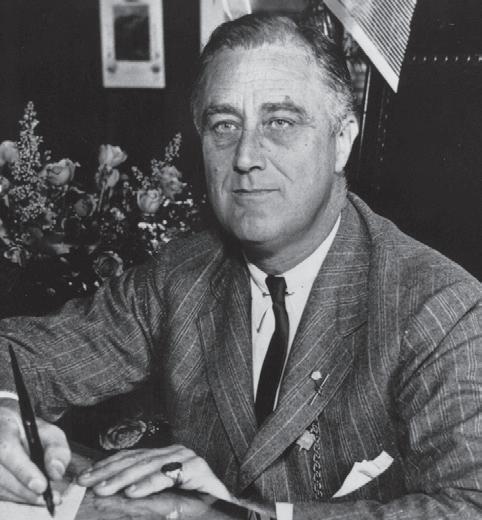
October 9, 1941: President Franklin D. Roosevelt (D-NY) approves an atomic program that would become the Manhattan Project
October 3, 1941:
“The Maltese Falcon” directed by John Huston and based on Dashiell Hammett’s 1929 novel of the same name, starring Humphrey Bogart and Mary Astor, premieres in New York City
See how many words you can create. Must have center letter in word and can use letters more than once. 4 letter word minimum.
October 6, 1956: Scientist Albert Sabin announces that his oral polio vaccine is ready for testing; it would soon supplant Jonas Salk’s vaccine in many parts of the world P I S E H T G

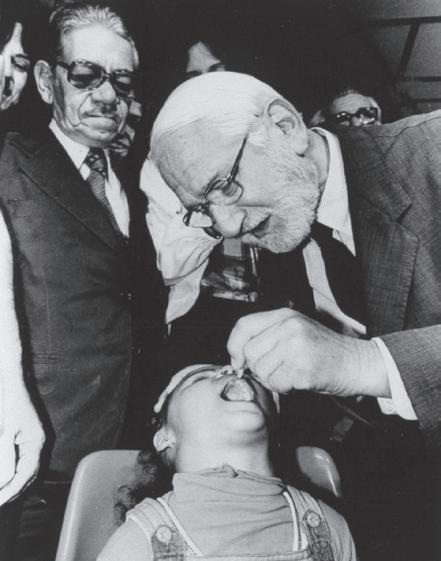
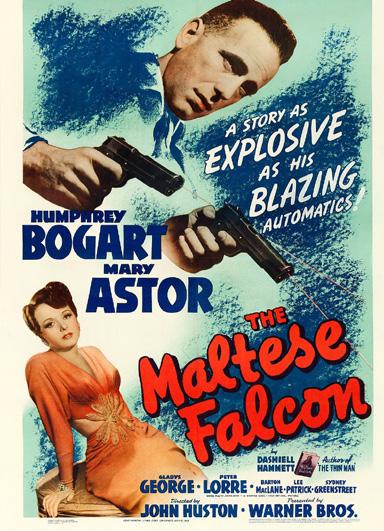
October 7, 2001:
U.S. invasion of Afghanistan starts with an air assault and covert operations on the ground
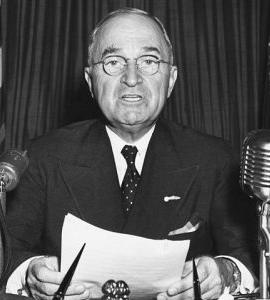
October 5, 1947: President Harry Truman (D-MO) makes the first presidential address televised from the White House

October 4, 1883:
The Orient Express departs on its first official journey from Paris to Istanbul


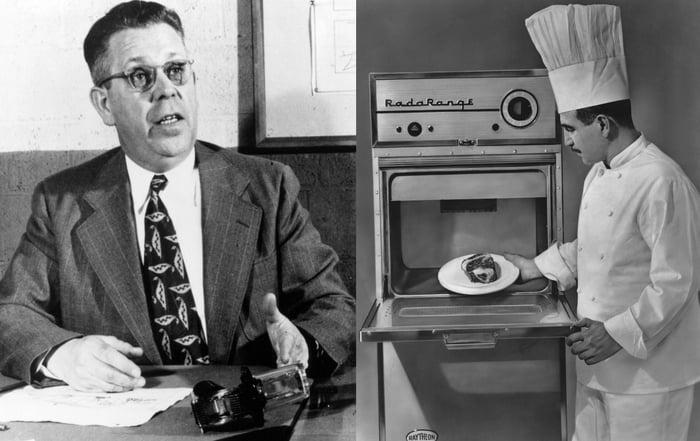
October 8, 1945:
By PJ Balzer
People are seriously struggling in 2024; I think that’s something we may all agree on. Whether it’s financial pressures, health concerns, family or marital deterioration, children who have gone astray or are addicted, society unraveling at the very core, or just questions within our own hearts about life and our existence. Most people are having a rough time both inside and out, and it’s definitely showing more on the outside.
There has to be at least a dozen instances this year where I was in the store early in the morning behind someone on line buying alcohol. I’m not talking about buying alcohol to bring to a barbeque later in the day. I’m talking about a person buying alcohol at 8:00 in the morning to drink on the way to work or on the sidewalk outside the store. There was one gentleman who opened his tall beer in the store as soon as the register closed. It’s almost as if he was saying, “I just can’t feel this pain I’m feeling any longer.” My heart was hurt for him. I’m not sure if it’s something I’m more aware of, or if people are drinking heavier, more frequently, and without boundaries. Waking up in the morning just to numb away the pain and past all over again.
I personally haven’t had a drink or drug in about fourteen years. After my middle brother died from a heroin overdose back in 2009, I walked into a church for the first time in decades and was never the same again. At the time, I was living in New York City and partying heavily, slowly losing all boundaries. The drugs I never said I’d do I was inching towards with other drugs. The weeknights I said I’d never party on I was starting to. I myself was living with a lot of pain, regret, and loneliness inside while using alcohol and drugs to attempt to wash it away or just forget about it for now. God has not only delivered me from myself, but He’s also given me a wonderful way to honor my brothers short time on earth by living sober while also reaching back to others who are now where I once was.
We all have pain, it’s part of the human experience. There are instances from our childhood, things done to us or by us to others that we wish never happened; there is trauma we’ve experienced, people who have used or abandoned us, expectations we had and were never met; we all have disappointments, the damaging words of people we love have left bleeding wounds that no one else sees but we know are there; molested or violated as helpless children by people we should have been able to trust. Some people have experienced all of the above only to couple it with all the pressures of life in 2024.
We are prone to use alcohol and other substances only to numb all of the memories, the feelings and pain, yet it’s only a few-hour fix. We have to numb it away every few hours and then wake up and do it all over again. We can’t sit with ourselves in silence. We keep busy and love noise around us only to stop us from thinking too much and having to face what’s really inside.
I’ve brought all of my pain to Jesus, the one who knows me better than I know myself. He knows my life from even before the womb until this very moment and every detail in between. Every circumstance, both good and bad. Every hurt, word, disappointment, fear, and anxious thought. He knows it all. He desires to help me by healing it using His processes and His words. Only He is able to perform this thorough of a surgery on my heart and on yours too, if you will allow Him to, of course.

torment you’re experiencing.
You’re not alone, you are loved.
If you’re the person who is buying alcohol early in the morning or drinking on the way home to walk into the
“Then Jesus said, come to me, all of you who are weary and carry heavy burdens, and I will give you rest. Take my yoke upon you. Let me teach you, because I am humble and gentle at heart, and you will find rest for your souls. For my yoke is easy to bear, and the burden I give you is light.”Matthew 11:28-30

The U.S. Surface Transportation Board (STB) has approved the Townline Rail application for a 5,000-foot rail line onto the CarlsonCorp property in Kings Park.
During a thorough Environmental Assessment, the STB addressed questions and concerns raised by residents. Unfortunately, misinformation continues to circulate in the community. You can read the STB’s full environmental findings by scanning the QR Code below.
authorization to construct the transloading facility. With this next step, we believe it is important to address some of the following misconceptions about this project:
HazMat Because the Town of Smithtown and the State DEC have jurisdiction over the transloading facility and will not permit hazardous materials to be transloaded at the facility, materials such as chlorine, petroleum products, or other hazardous chemicals will not be transloaded on or off of rail cars coming in and out of Townline Rail.
Hours of Operation Loading and unloading of material will take place under our permitted hours of operation Monday through Saturday with one train per day in and out; this will not be a 24/7 facility.
Truck Traffic Transportation of sand, gravel, and other materials to the industries along Old Northport Road by rail reduces truck traffic into the area from other locations. Shipping ash and construction debris off Long Island by rail significantly reduces truck traffic on our major highways.
Environment The STB’s analysis states that with mitigation measures that we have agreed to, there will be minimal to no adverse environmental impacts (EA at pg. iii) and “no impacts on groundwater.” (EA at pg. 50)
Zoning The Town of Smithtown updated Master Plan acknowledges the history of Old Northport Road as an industrial corridor which contributes to the local economy and states this area is not for residential development.


Townline Rail is an environmentally preferred alternative to trucking materials off Long Island. It will reduce emissions and traffic congestion and is recognized as a
By Cait Crudden
In a significant step toward the ongoing revitalization of East Patchogue, developers Rechler Equity Partners officially broke ground on the new Greybarn luxury apartment complex. The project, set to rise on the former site of the Mediterranean Manor, is seen as a key development for the community’s future. Situated east of Route 112 on Main Street, the new apartments represent a fresh chapter in East Patchogue’s transformation into a thriving, modern neighborhood.
The groundbreaking ceremony, held last week, attracted the presence of several local leaders and officials, all of whom expressed optimism for the future of the community. Among those in attendance were State Senator Dean Murray (R-East Patchogue), Assemblyman Joe DeStefano (R-Medford), Suffolk County Legislator Dominick Thorne (R-Patchogue), Brookhaven Town Supervisor Dan Panico (R-Center Moriches), Deputy Supervisor and Councilman Neil Foley (R-Blue Point), and Patchogue Mayor Paul Pontieri. These leaders underscored the importance of the Greybarn development in the broader context of East Patchogue’s growth and modernization.
The development of Greybarn is a critical piece of East Patchogue’s ongoing revitalization efforts. The area, which has seen a resurgence of interest from businesses and developers, is primed for transformation. The decision to build a luxury apartment complex on the site of the former Mediterranean Manor marks a shift in the type of development taking place in the community, moving from older properties to modern residential spaces that cater to a more diverse population.
“I attended the groundbreaking for the Greybarn at Patchogue apartment complex in East Patchogue,” Senator Murray remarked, joining his colleagues in welcoming the Greybarn development and Rechler Equity Partners to East Patchogue. “This project marks the first steps to a new era, revitalizing East Patchogue and growing the community.”
Rechler Equity Partners, the developer behind the project, is known for their modern designs and commitment to enhancing communities through sustainable and smart growth. The new apartment complex will feature a range of amenities and high-end finishes, positioning it as a desirable place to live for both young professionals and families alike.
For Brookhaven Town Supervisor Dan Panico, the Greybarn development represents more than just new apartments, it’s a catalyst for the broader revitalization of East Patchogue.
“Successful Town governance incorporates community supported redevelopment to revitalize our downtown areas while also continuing to preserve open space and lands, when possible,” said Panico.
“This development is a testament to the significant investment and commitment from our partners, who are spending millions to restore and beautify our community,” said Councilman Foley.
As East Patchogue continues its transformation, the influx of new residents will also provide a boost to the local economy. The Greybarn apartments are expected to draw in people who will patronize local shops, restaurants, and services, providing a much-needed economic boost to the area.
“This is an over 90-unit luxury apartment complex that is officially now under construction,” said Assemblyman DeStefano.
With construction underway, the Greybarn apartments are expected to be a major asset to the community upon completion. For now, local leaders and residents alike are eagerly watching the progress, confident that this development will play a pivotal role in East Patchogue’s ongoing transformation.
As the Greybarn project moves forward, it serves as a reminder of the power of smart development and community collaboration in creating vibrant, thriving neighborhoods.

By Cait Crudden
Last week, the Longwood community came together for its annual Community BBQ at Granny Road Park, a beloved event that has become a symbol of unity, celebration, and support for residents. With close to 1,000 community members and their children in attendance, the event showcased the strength of the Gordon Heights area and the power of collaboration between local government, the school district, community organizations, and residents.
The BBQ, sponsored by the Town of Brookhaven, provided a day of family fun, free food, and access to important community services. The picturesque setting of Granny Road Park, located in Gordon Heights, offered children plenty of space to enjoy the day, with the playground, football field, and basketball courts buzzing with activity. Laughter and games filled the air as children ran around, tossed footballs, and shot hoops, making the most of the sunny afternoon.
While the children played, the event also featured a host of vendors who were present to share information about the services they offer to the community. Local organizations provided everything from free school supplies, backpacks, and non-perishable foods to mental health services, demonstrating the broad range of support available to residents. The presence of these services made the event more than just a fun gathering, it was an opportunity for families to gain access to valuable resources, especially as the new school year begins.
The Public Library had a table, offering library events and showcasing upcoming programs and services for families. Representatives from various non-profits handed out backpacks filled with supplies, ensuring that children would have the materials they need to succeed in school.
The BBQ itself was a highlight, with fresh, hot food being served to all attendees. Councilman Mike Loguercio (R-Ridge), a dedicated supporter of the event, was on hand, personally helping to distribute meals and engage with the community. Loguercio, who represents parts of the Longwood School District
area, took the opportunity to speak directly with residents, addressing any concerns they had about local issues and services.
Attendees enjoyed a classic BBQ menu of hot dogs, hamburgers, as well as ice cream trucks present in the parking lot. Families sat together at picnic tables or on blankets spread out on the grass, enjoying the meal and the company of their neighbors.
One of the most notable aspects of the event was the collaboration between local government, the Longwood School District, and community organizations. This cooperation ensured the success of the BBQ and provided residents with not only a day of fun but also access to essential resources. The event demonstrated how the different sectors of the community, government, schools, and nonprofits, can work together effectively to support residents.
The annual BBQ has become a staple event for Gordon Heights, highlighting the area’s commitment to fostering a close-knit, supportive community. It’s an opportunity for residents to come together, share a meal, and connect with local leaders and organizations that are there to help them in various ways.
As the event wrapped up, families left Granny Road Park with smiles on their faces, full stomachs, and, for many children, brand-new backpacks filled with school supplies. The day’s success was a testament to the Longwood community’s resilience and unity, and it reinforced the importance of events like this that bring people together.
For Councilman LoGuercio and others involved in organizing the event, the annual BBQ is a cherished tradition. With the school year just around the corner, the Longwood Community BBQ was not only a day of celebration but also a reminder that the community stands strong, ready to support each other through thick and thin.
Granny Road Park is located at 617 Granny Road in Gordon Heights.
By Ashley Pavlakis
Standing in the Hall of Fame for any achievement, sports, music, or otherwise is an amazing accomplishment.
To be inducted into the hall of fame in your hometown? Priceless.
The Suffolk County Sports Hall of Fame (SCSHOF) is a non-profit organization established in 1990 to honor athletes in Suffolk County who have made significant contributions as an athlete at the amateur and professional levels.
The Hall of Fame debuted a partnership in 2022 with Port Jefferson High School, now taught at Miller Place, to integrate a class into the curriculum. The class is centered around educating the students on local sports history. The curriculum is curated to teach lessons about local sports history while incorporating research, media, and business skills. The students have the opportunity to hear and learn from inductees who will serve as guest speakers throughout the class.
“The overall mission for the Suffolk Sports Hall of Fame is to honor the past and inspire the future. I don’t think there’s any better way to inspire the future than educating students today about the sports history of Long Island, “ SCSHOF President Chris Vaccaro told The Messenger. “There are so many great people and places that tie into our history. If you bring that right into the classroom, it could spark interest, it could inspire them to be great. At the very basic level it educates them about why we live in such a special place.”
While sports and school do mix, there needs to be a written aspect of the class where students can take what they’ve learned and put it to use. The students put together research projects about local places that hold significance to sports that will allow the Hall of Fame to consider placing historical markers at those locations. Besides a research project, the students will contribute to the HOF on social media platforms.
“The whole process has been fun! From first creating the original idea and implementation at Port Jeff, to being able to rejuvenate and make the course more impactful now at Miller Place has been both hard work and rewarding. There were two sections of the class and 30 students two years ago and now I have five sections and over 100 students,” said Miller Place High School teacher, Bryan Vaccaro.

“You always get the most out of your students when you’re able to relate to them; it’s no question that at the high school level, there is a high rate of engagement for sports. The most enjoyable part for me is seeing so many kids wanting to take the class in addition to overseeing the course from idea to creation of concepts to implementation of teaching it. For any sports fan, talking about big games or legendary performances with your friends are alltime memories. We now get to do that in the classroom, “ said B. Vaccaro.
Perhaps the coolest part of the class is the opportunity to attend the induction ceremony that takes place in June. Only select students are invited and while in attendance they get to take part in providing social media support.
“The students and the administrators loved it. It’s a very unique partnership that doesn’t happen too often at any type of organization. I think a lot of people respect what the Suffolk County Sports Hall of Fame stands for. The fact that we can bring that into a classroom is very unique and I’ve heard nothing but good things across the board,” said C. Vaccaro.
The class itself is a special experience, inherently different from classes that have been taught before.
“They come from a special sporting region and there’s a lot of great people who came before us. They as students can aspire to be great. I really want them to stay informed about all of the great history that happened here. I want them to talk to the hall of famers, [about] what they went through, and understand and visualize the journey and sacrifice that it takes to be great,” said C. Vaccaro.
By Ashley Pavlakis
The varsity boys’ soccer team of Brentwood remains at the top of the standings this fall season. The team has five New York State Championships under their belt, with the most recent title coming in 2023.
The Spartans are in the class AAA division of the New York State Public High School Athletic Association (NYSPHSAA). The Spartans are in League I of IX and compete in the standings with William Floyd, Patchogue-Medford, Central Islip, and Longwood.
In a national poll conducted by Youth Soccer Central, Brentwood ranked third on the Top 25 list in the United States.
“It’s consistency and quality of coaching, on top of the fact that we have a great community of soccer players and a community that loves soccer. So, the combination of all of that makes it work,” said Jason Lantz, the Assistant to the Coordinator for Brentwood High School. “The program, the coaches in the program, the history, the expectations, and the community being such a soccer rabid community, all of that together makes a difference.”
The team is led by head coach Ron Eden, who is in his 24th year of coaching at Brentwood High School. Eden, a member of the Suffolk Sports Hall of Fame in which he was inducted in 2010, was named Coach of the Year after coaching his team to a state title in 2023. Eden received the honor for the third time in his coaching career, having earned it in 2012 and 2005.
“Ron [Eden] pays attention to the details and has a vast world of knowledge about the tactics of soccer. With his experience, knowledge of the game,

his ability to figure out the tactics, and his attention to details with players makes a very big difference,” Lantz told The Messenger.
Brentwood dominated throughout September, posting a record of 10-01 in their first 11 games. The school is the largest on Long Island, so they have the advantage of having a larger player pool to work with. Eden’s team graduated 21 players last season and came back with 15 returnees and 2 starters.
“It’s a complete effort by everybody that they’re touched by. There are things that they don’t get with the club who has them all year round. It’s a nice balance, we definitely prepare them for the next level, we help them get into school and get good training. They have a beautiful facility now, so it’s been great. We don’t lose a lot of soccer games, we don’t measure it by that, but it’s been very successful,” said Eden.
The veteran head coach offered a piece of advice to boys looking to play high school soccer, especially under his guidance at Brentwood.
“I would say work hard. There’s a lot of kids trying out and there are the little details that separate players. Usually, I tell them to get themselves extremely fit because we don’t have time, we only have a three-day tryout. There are so many kids there that even good players fall through the cracks. Try to be proactive all year round, come to the weight room and the speed school,” said Eden.

